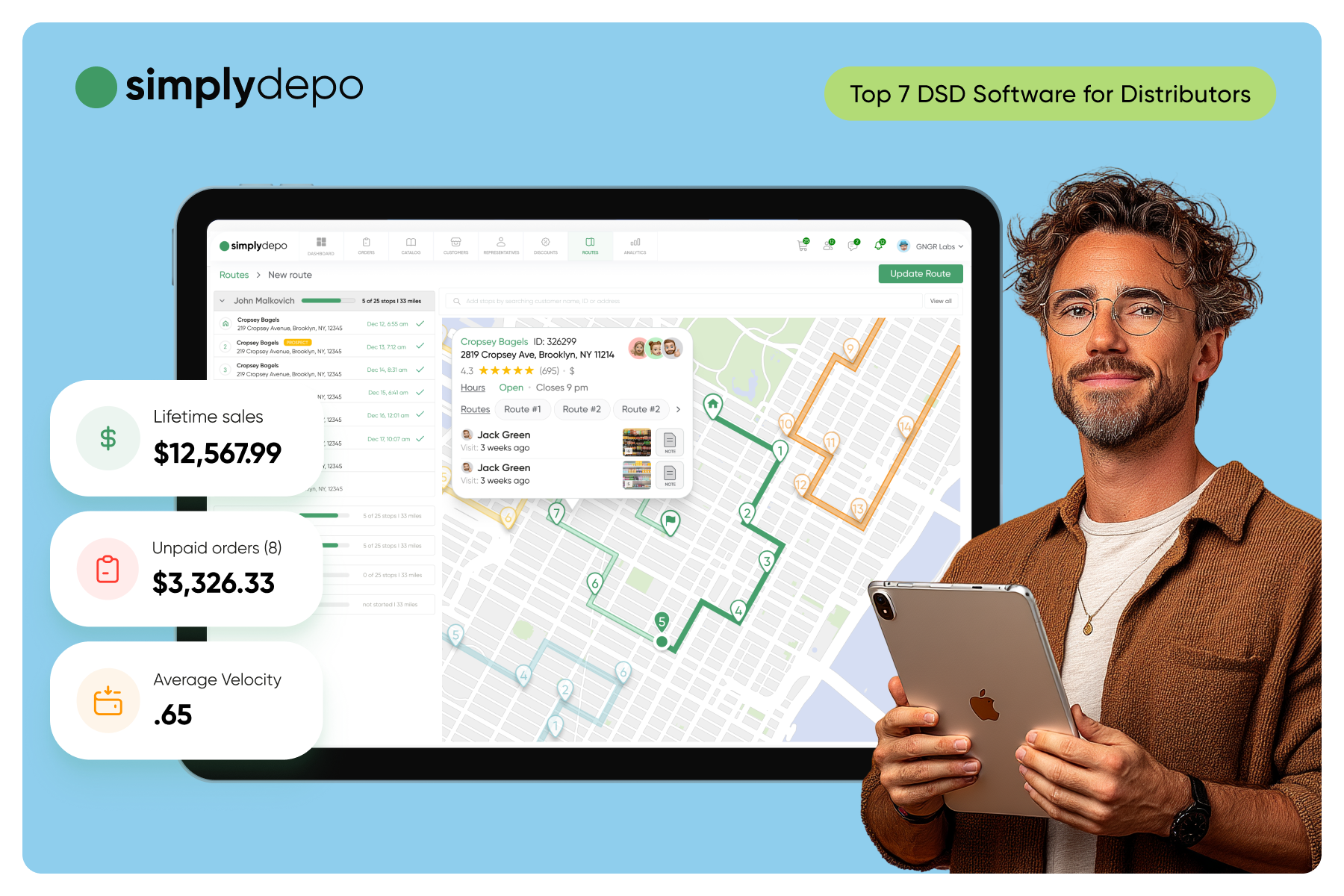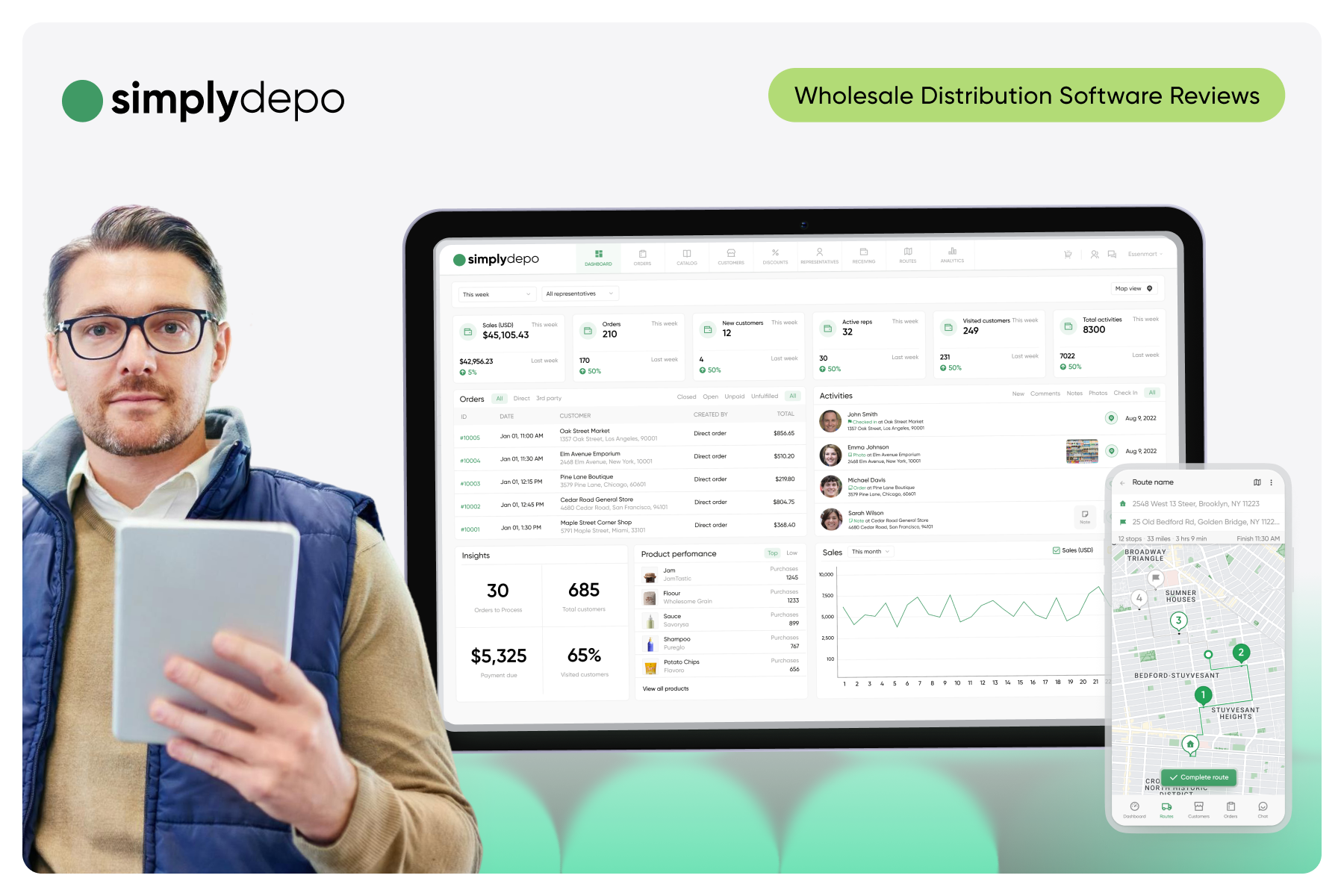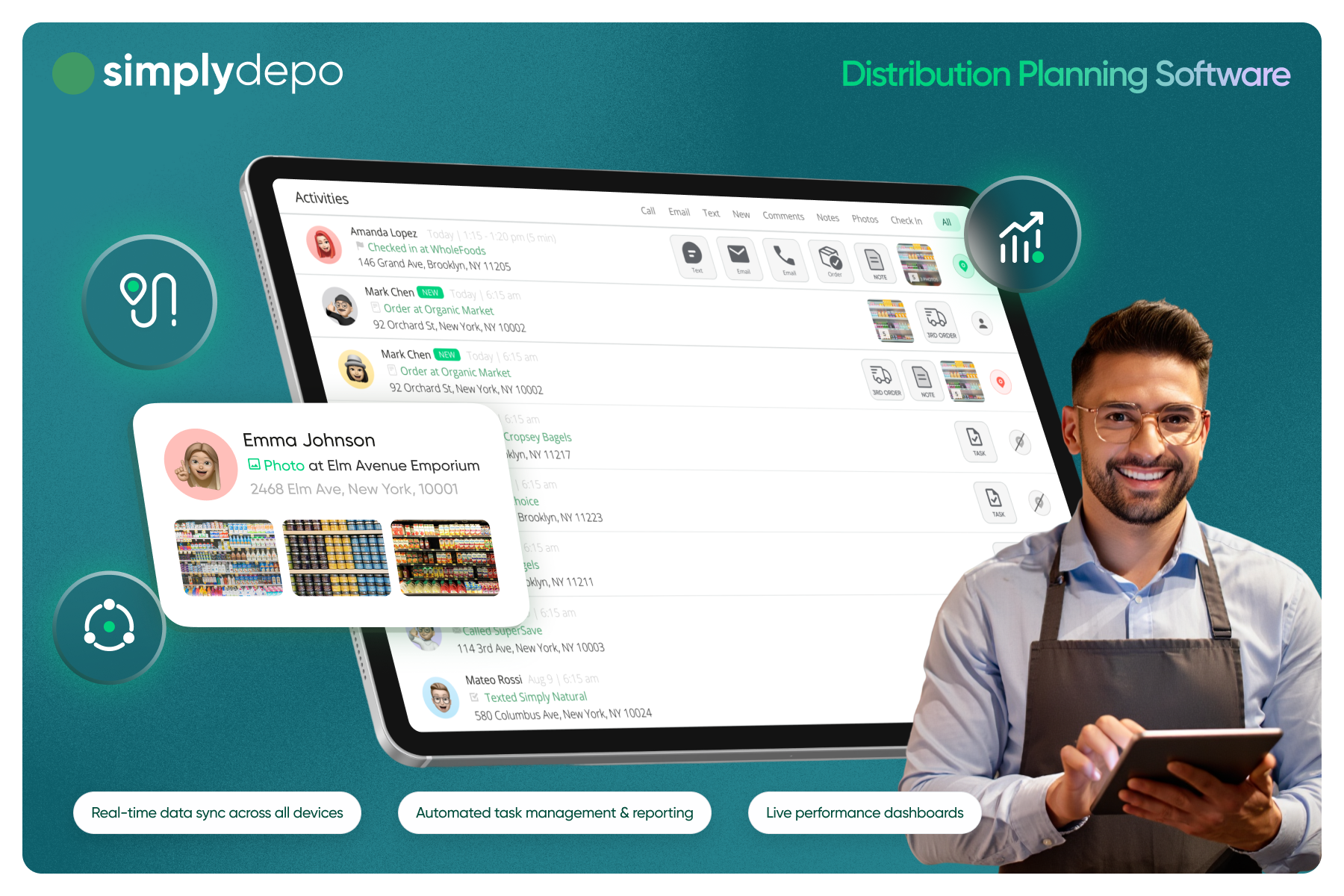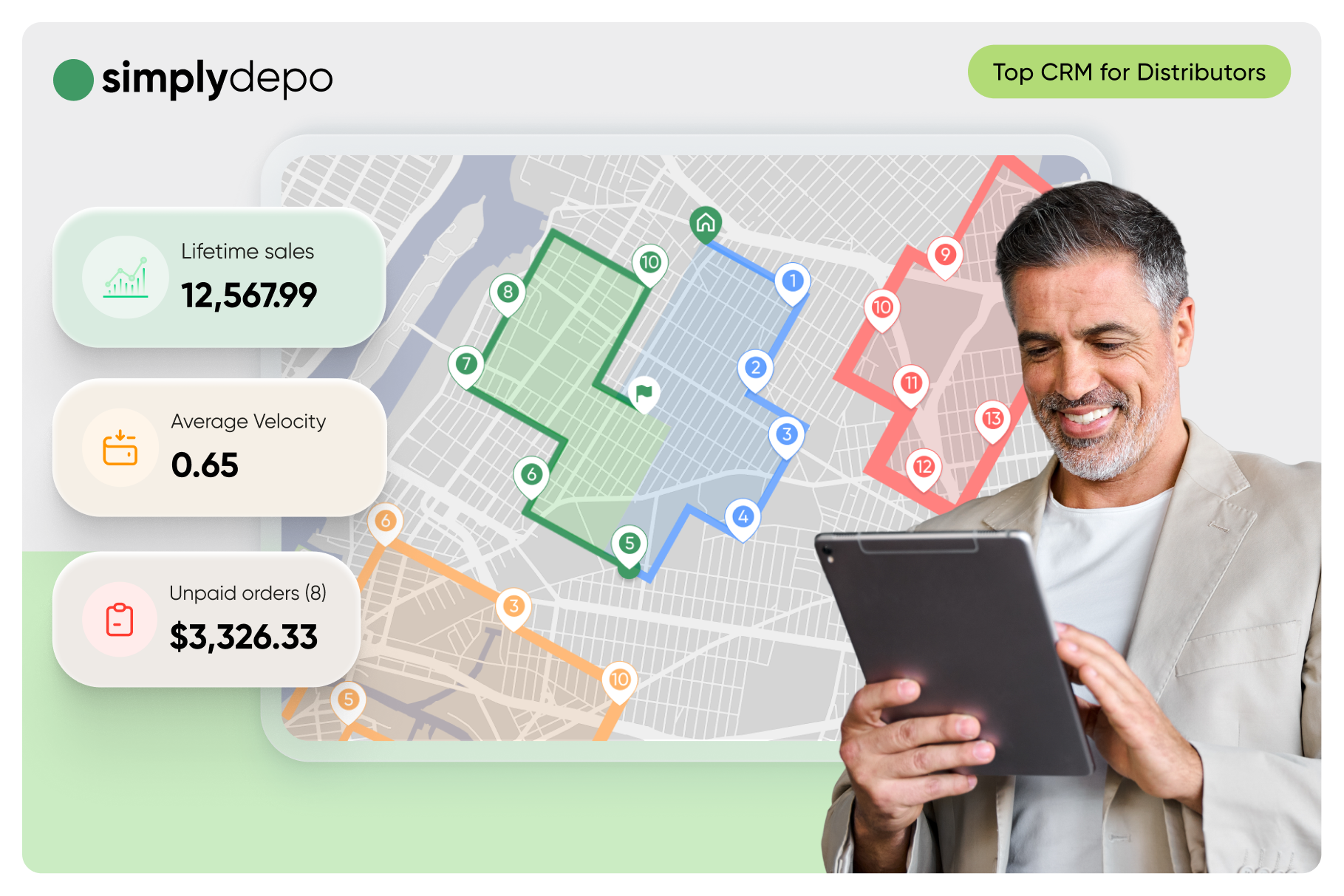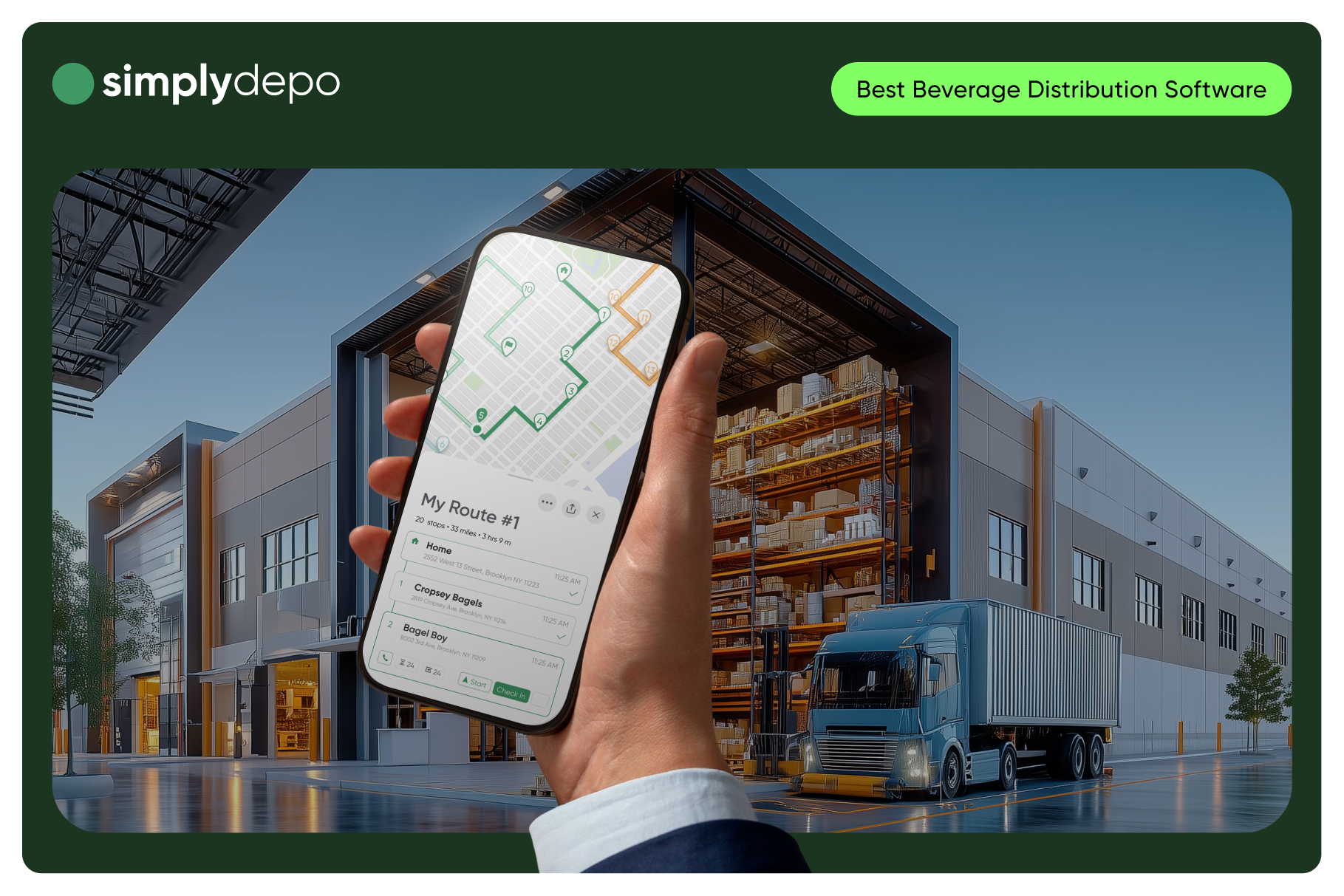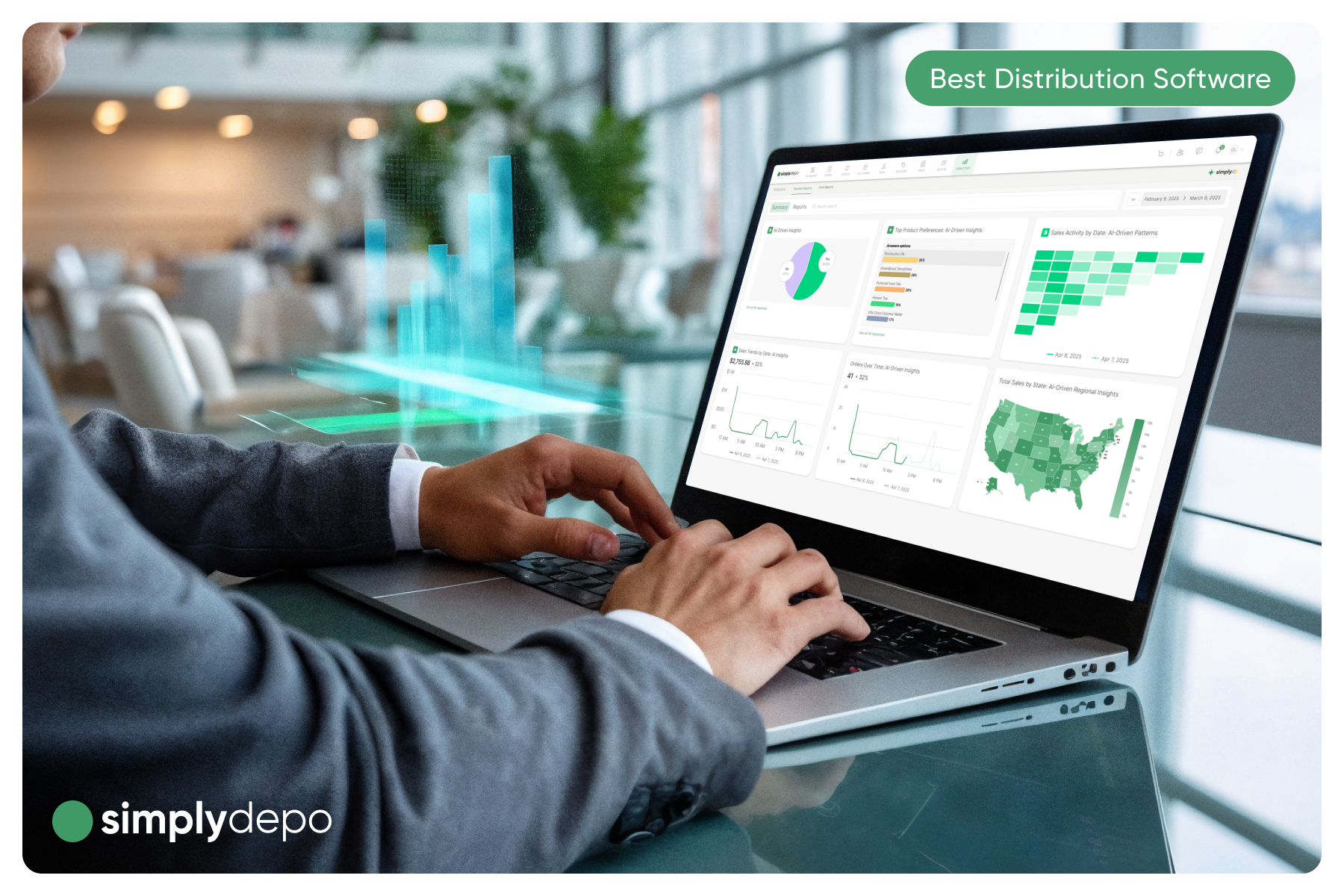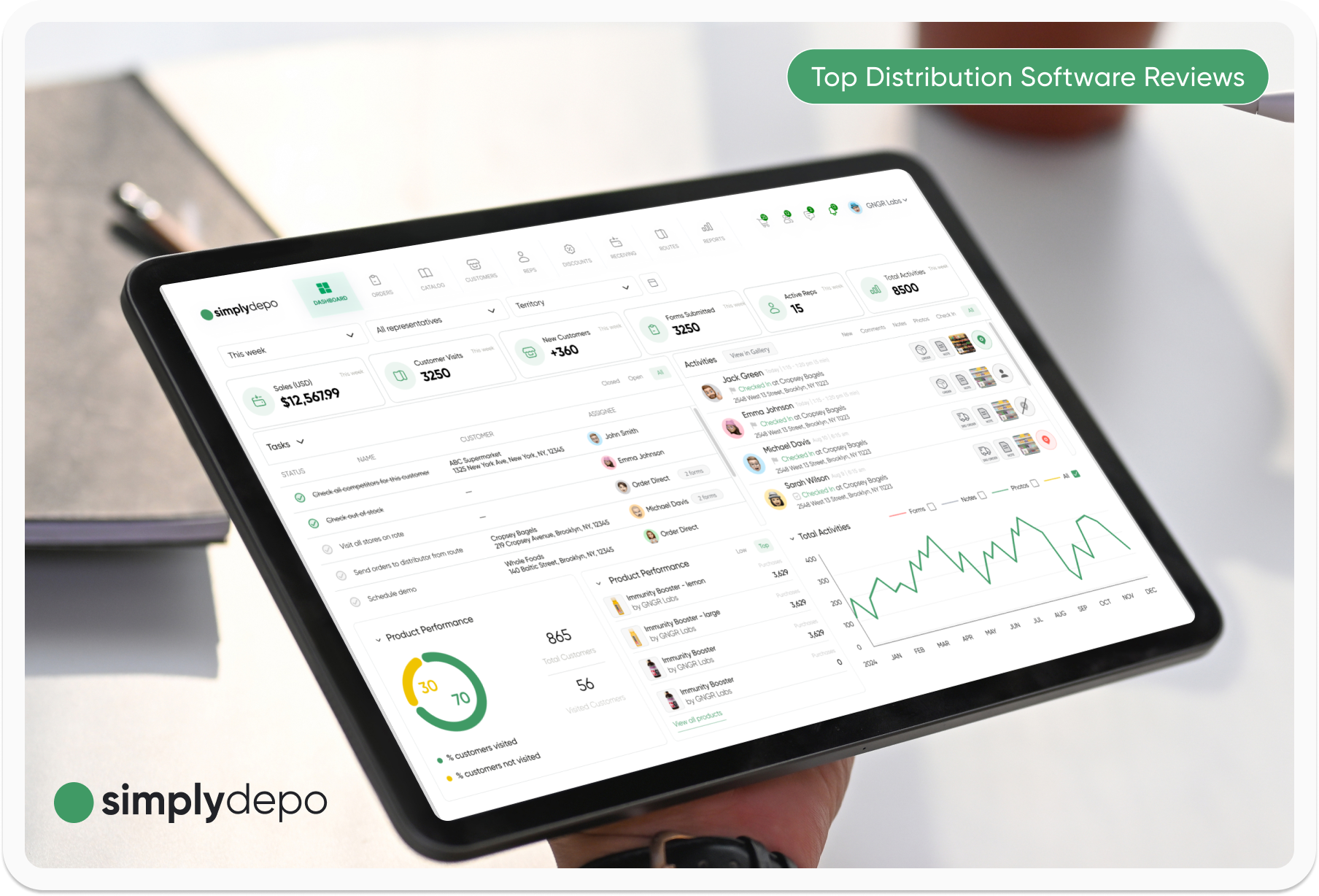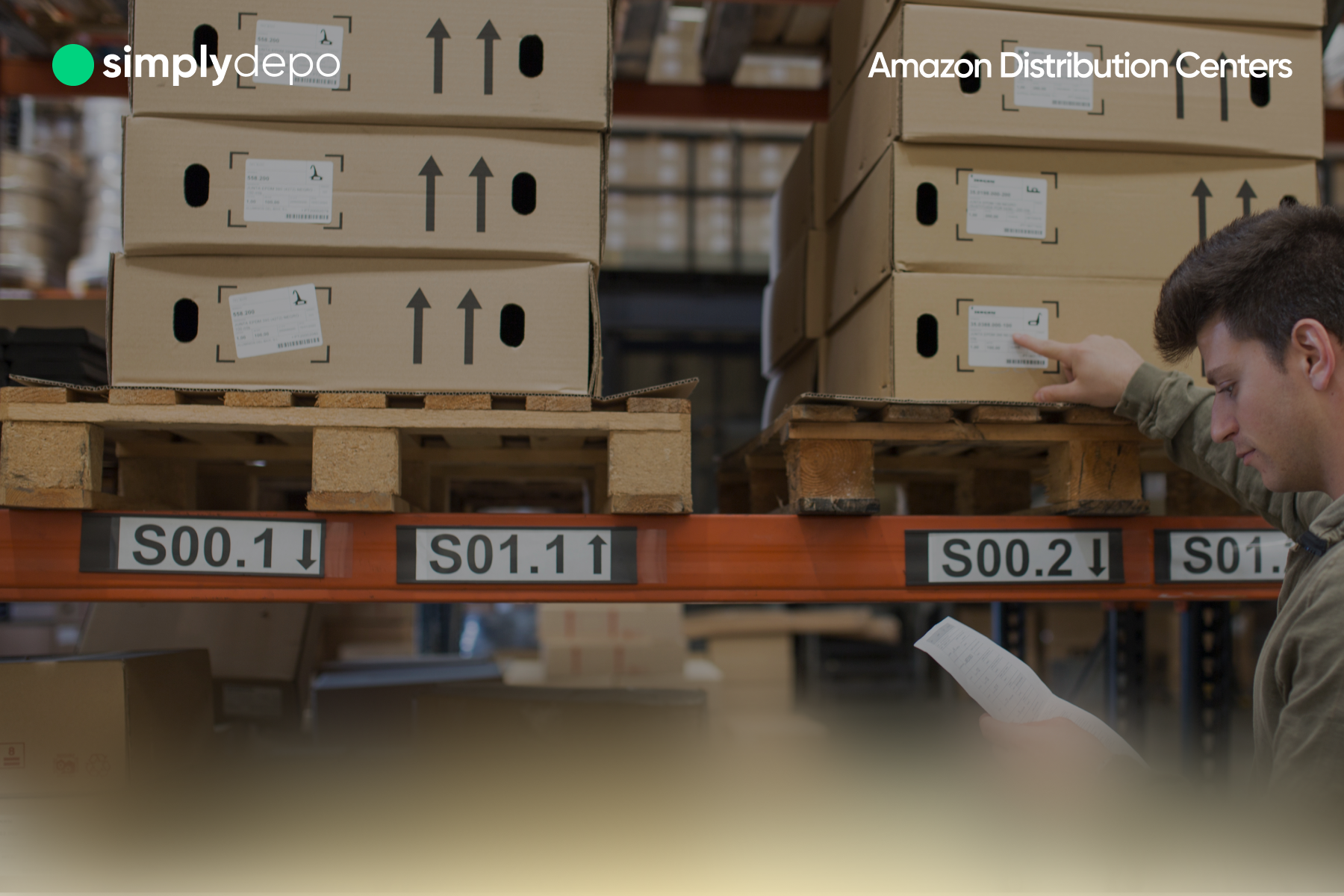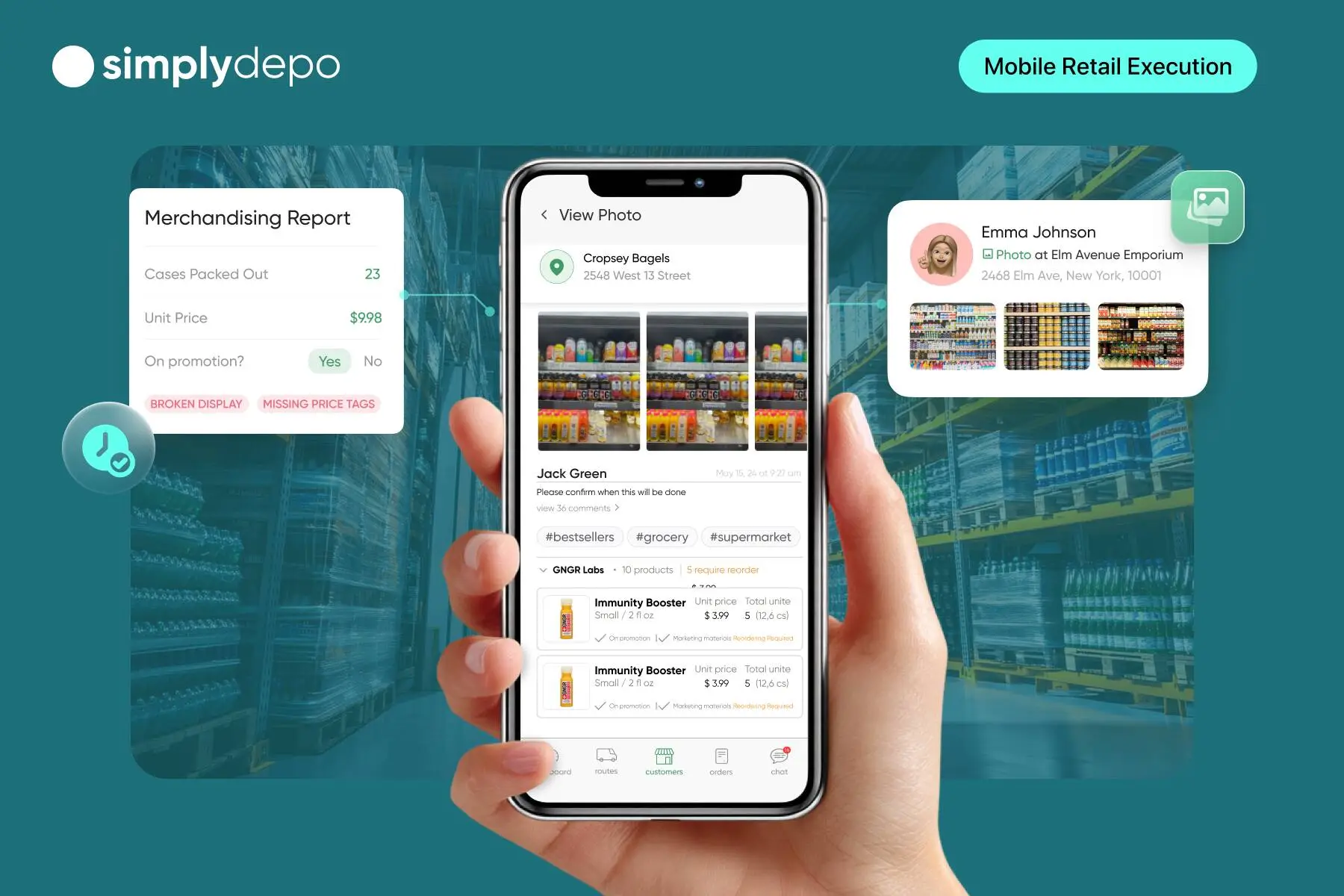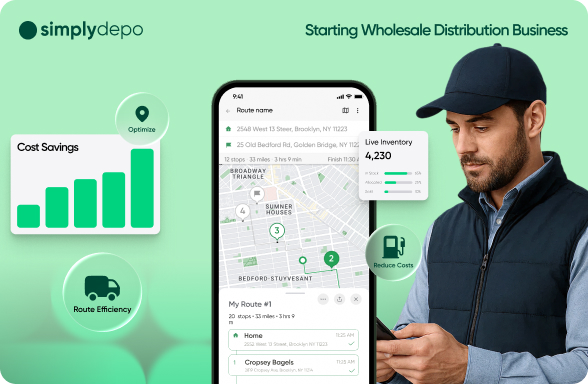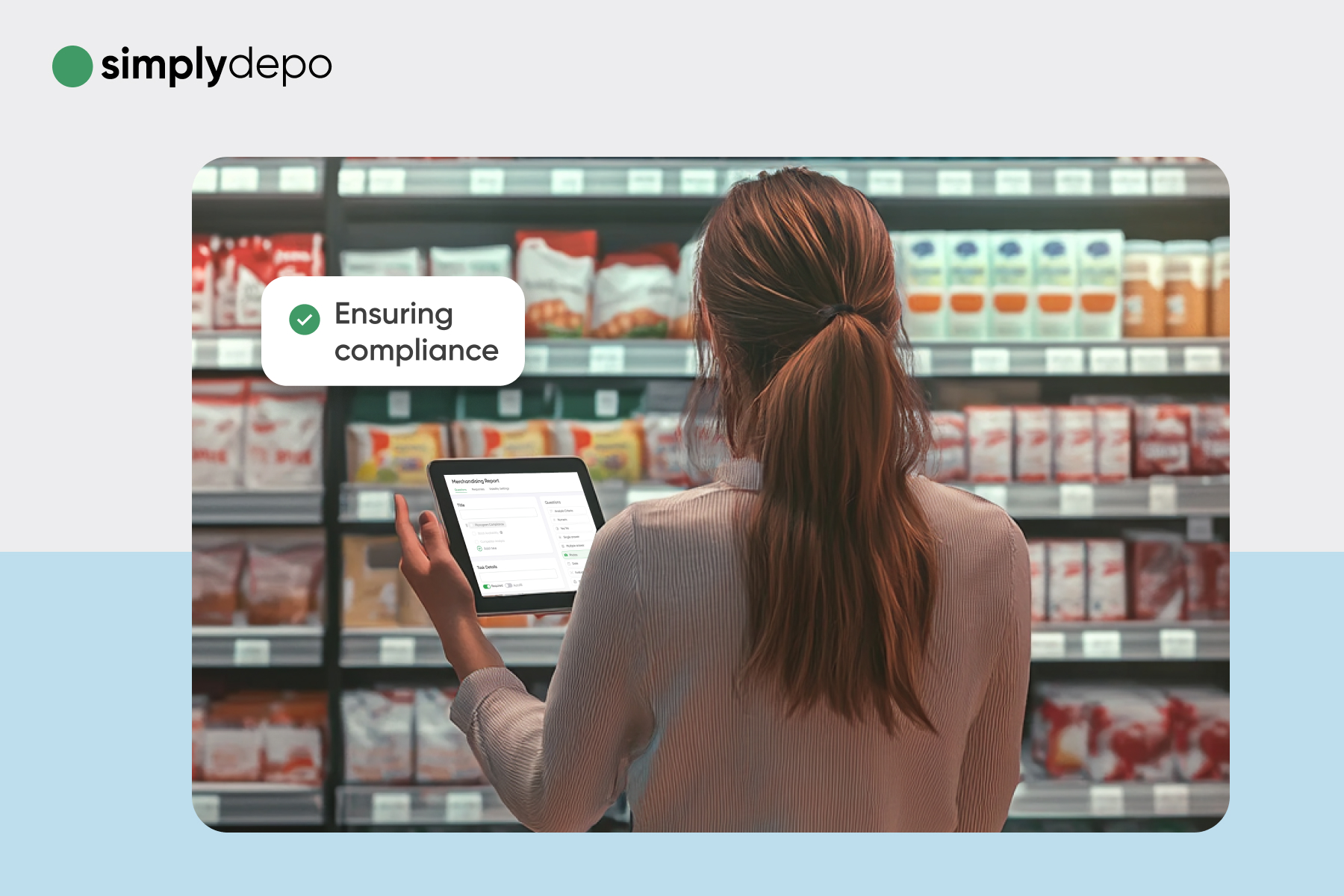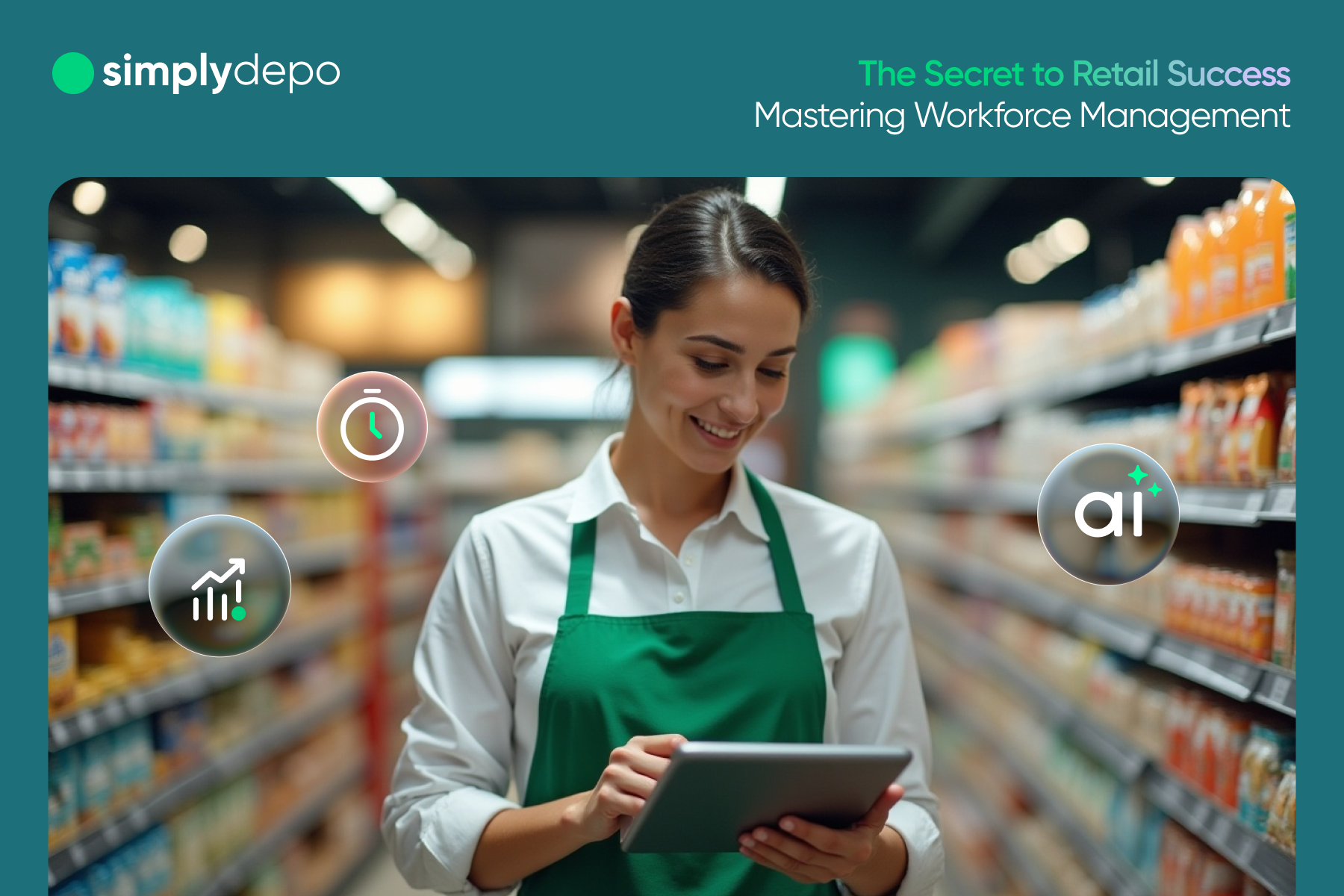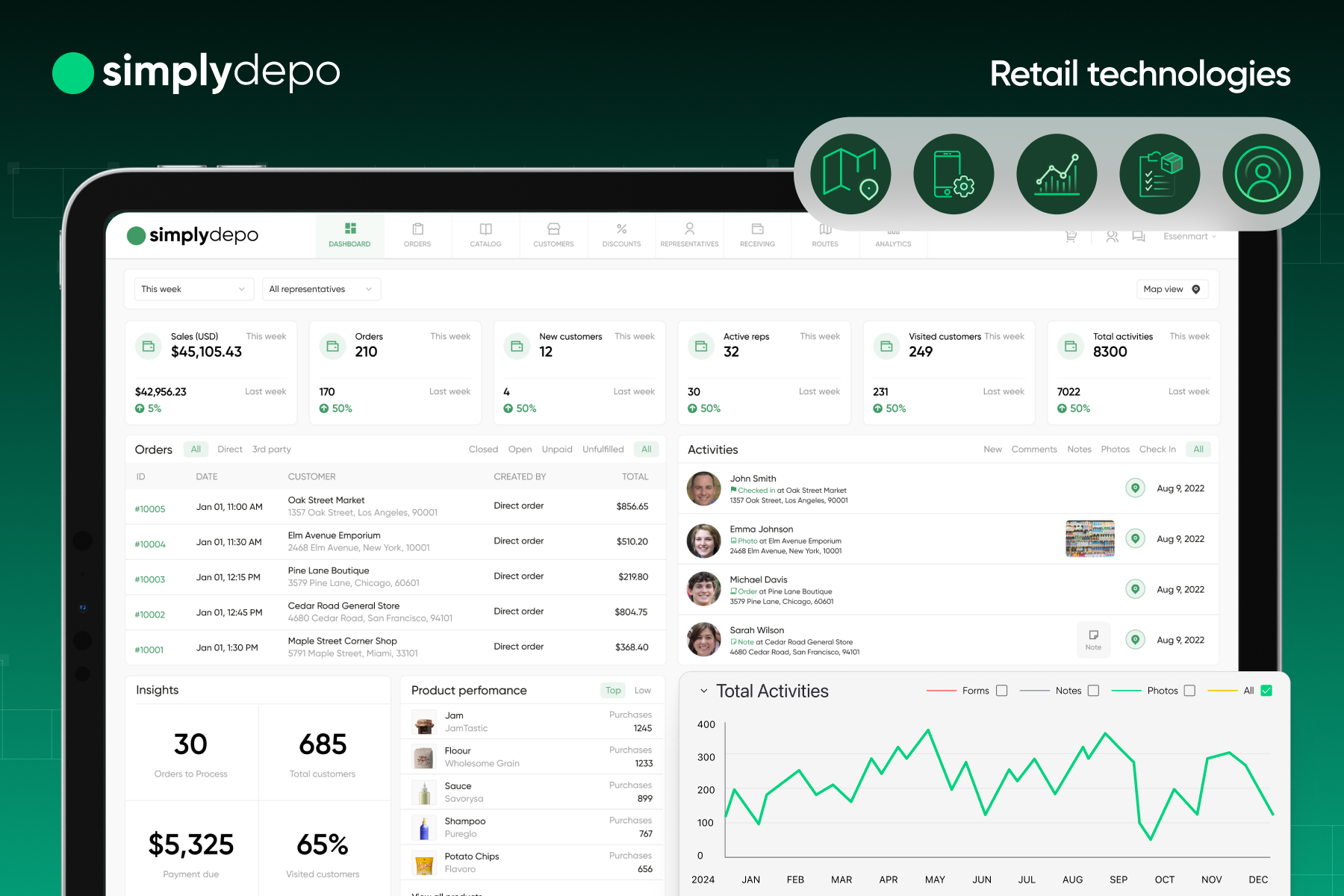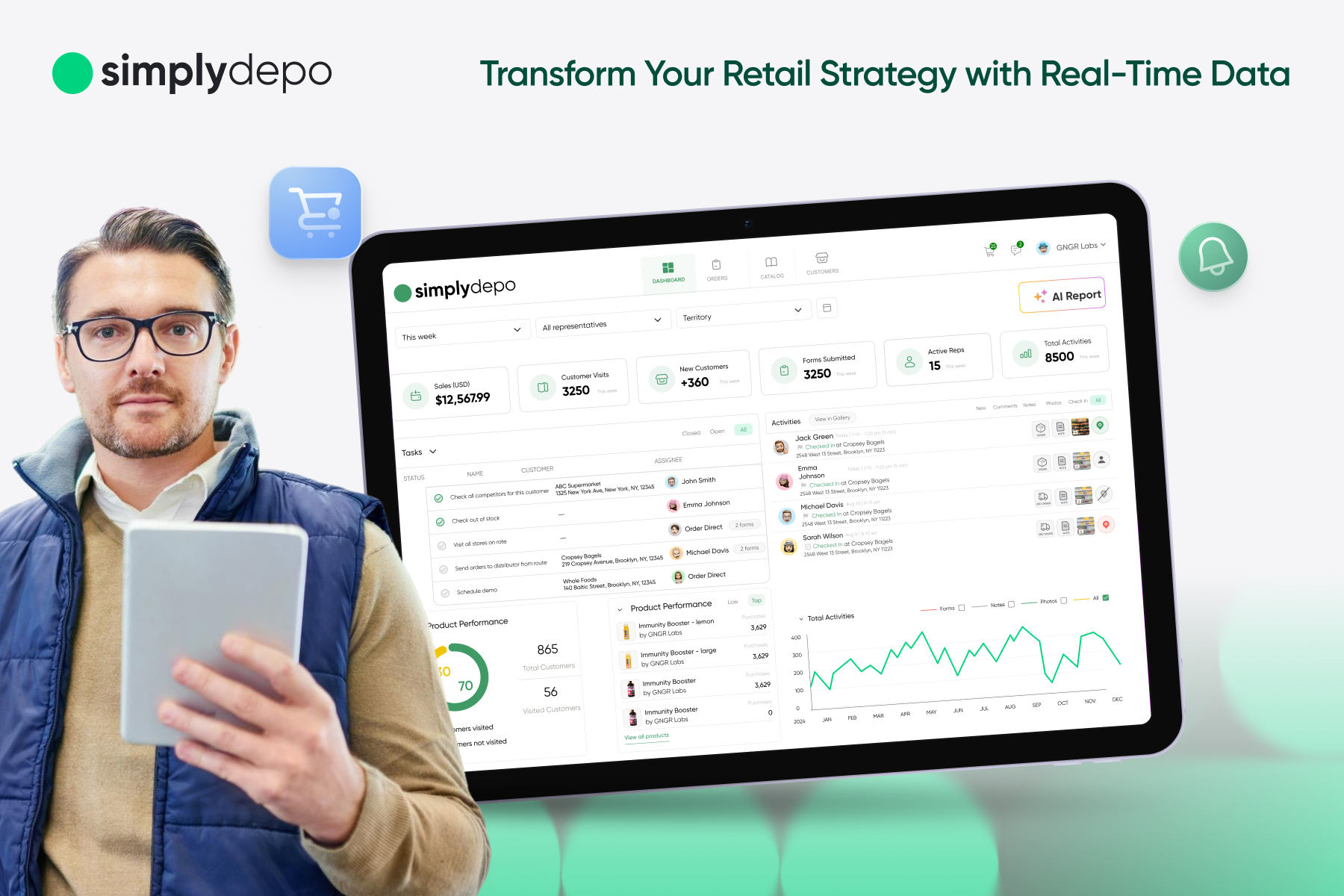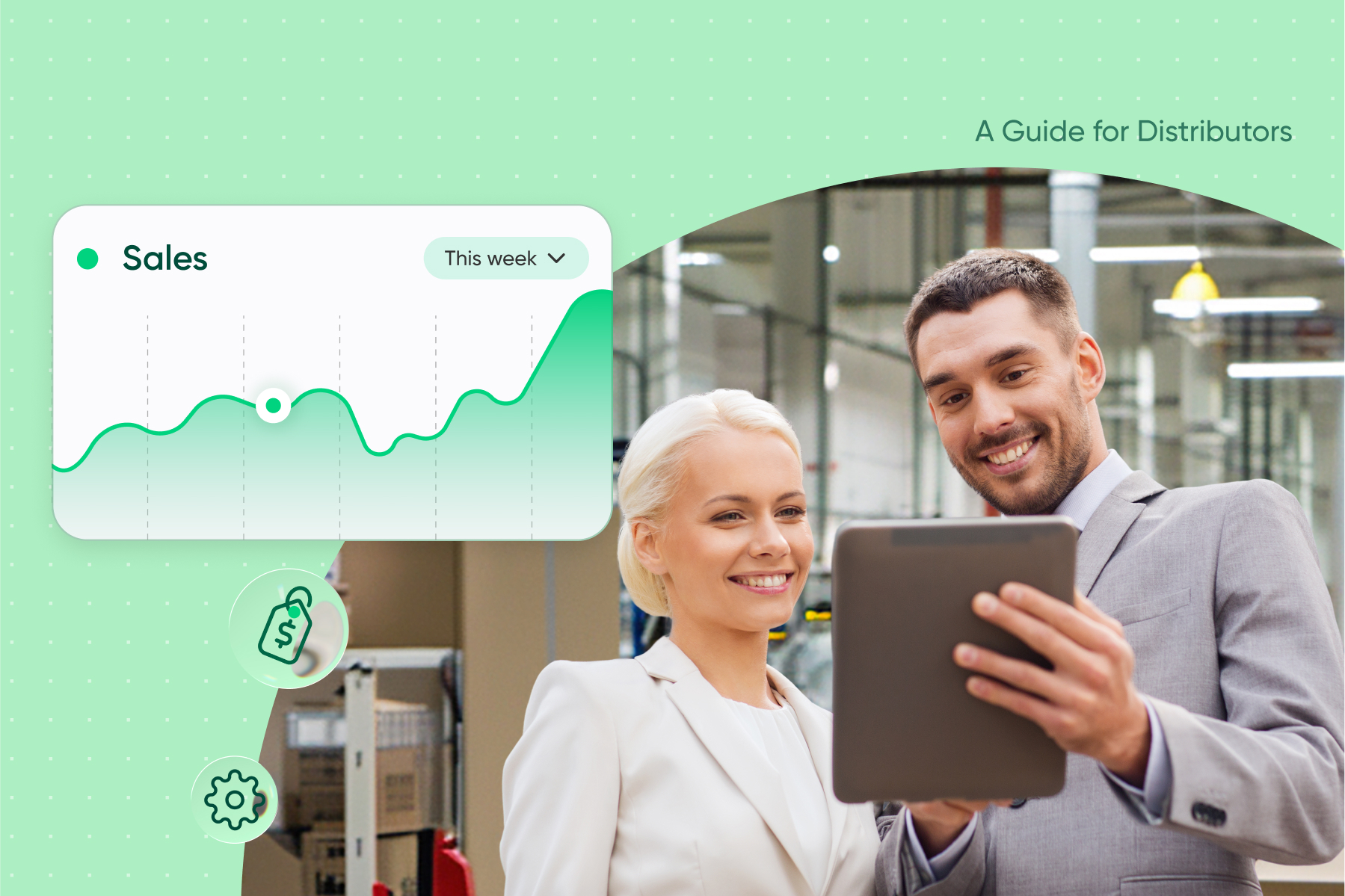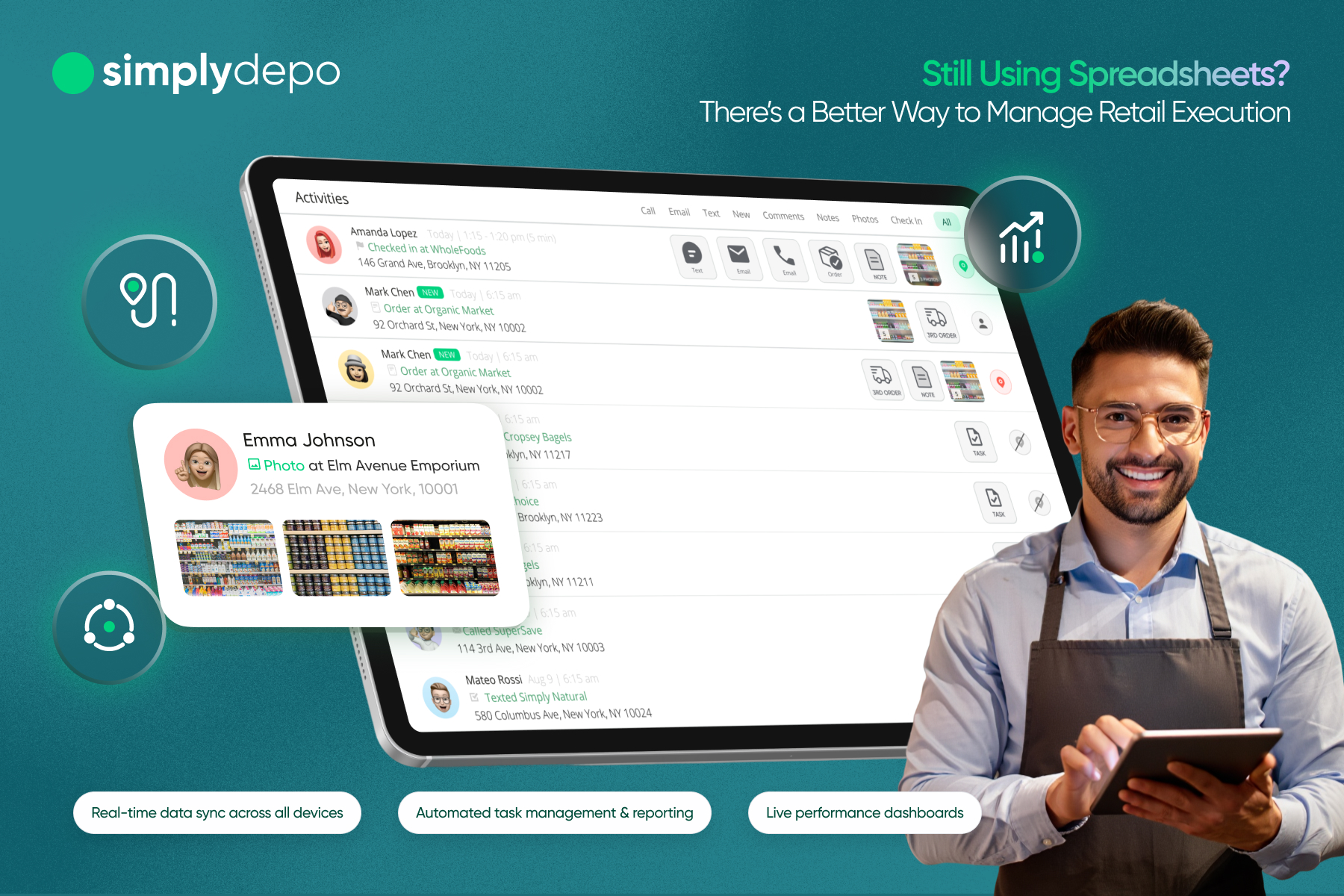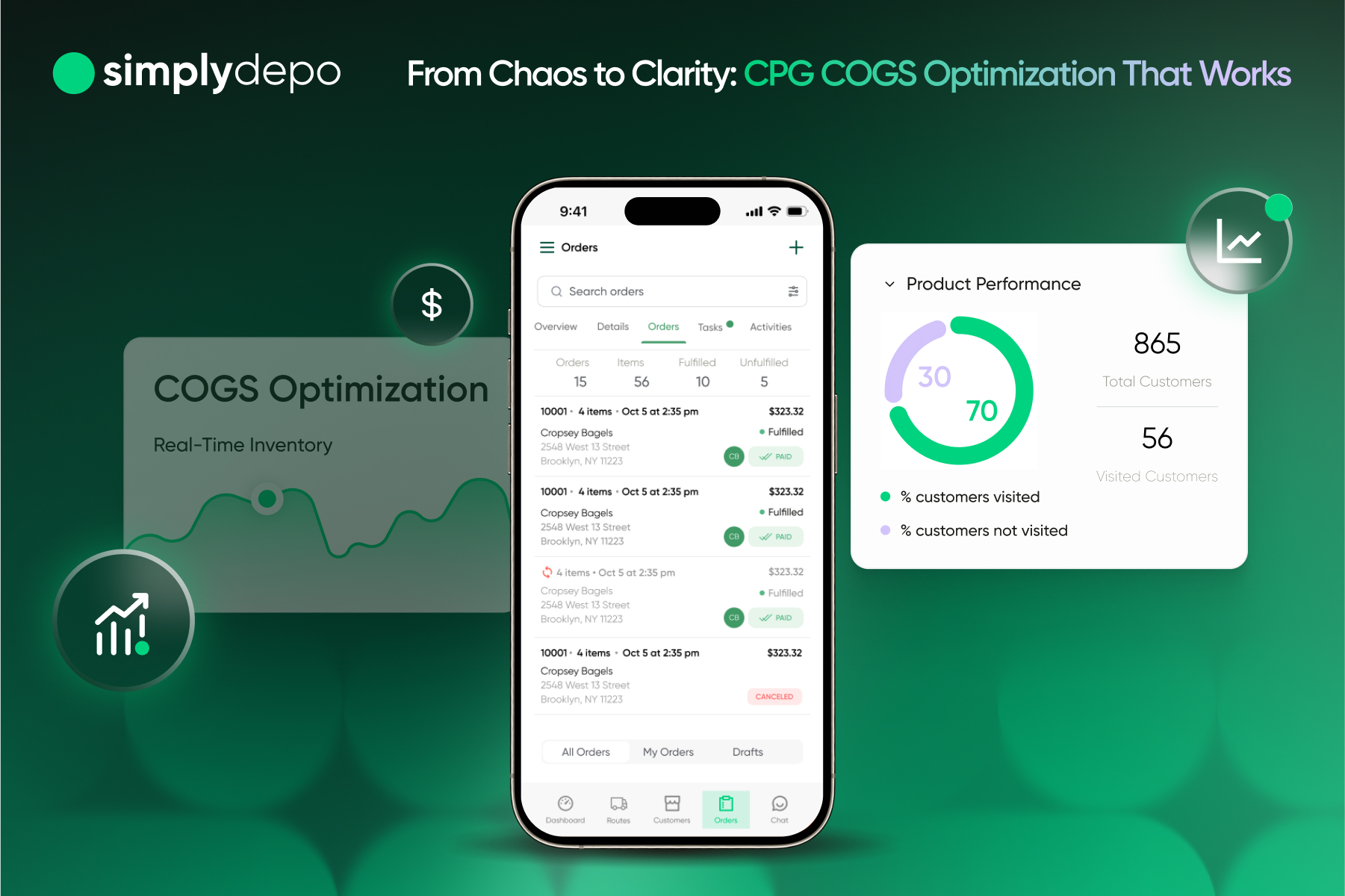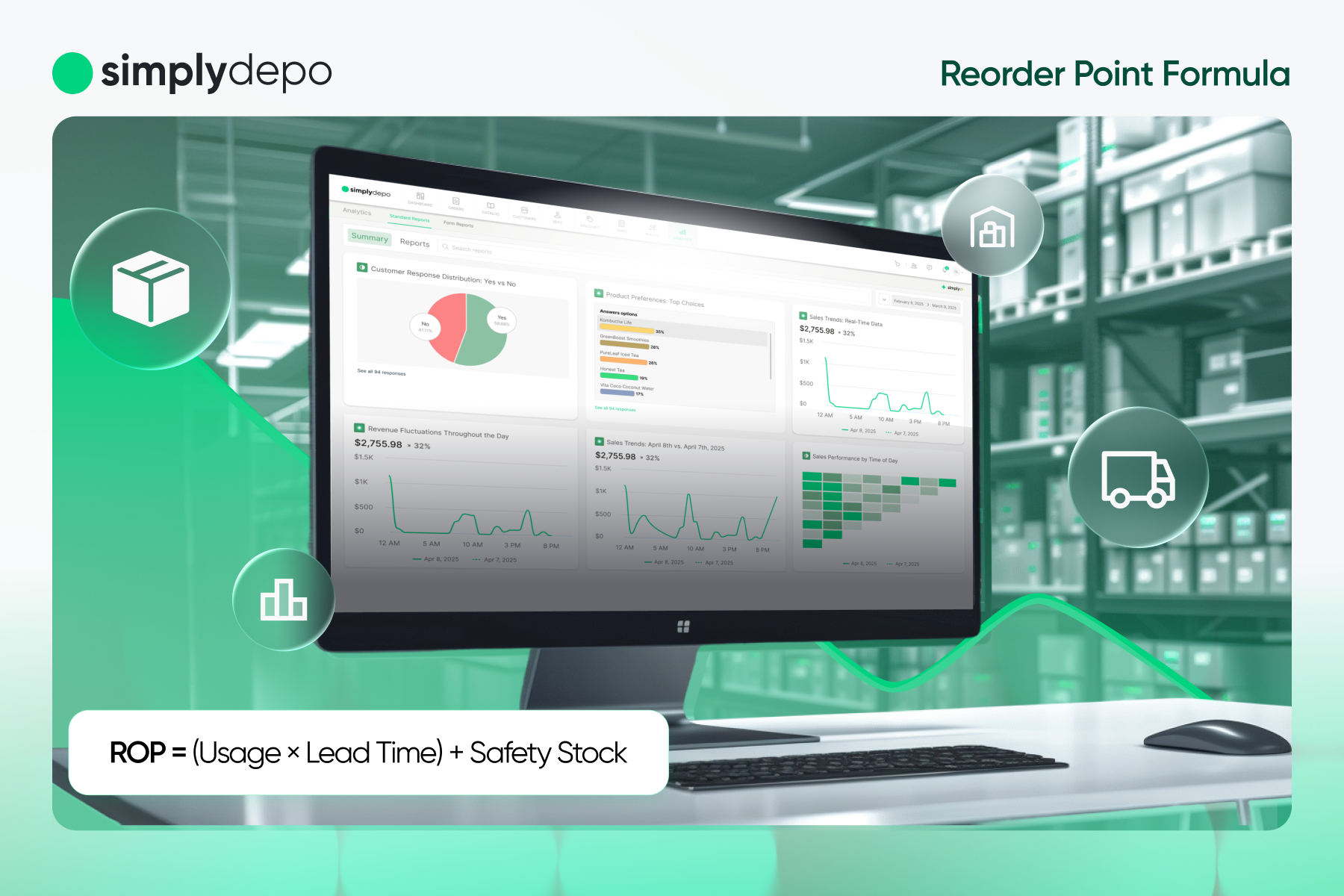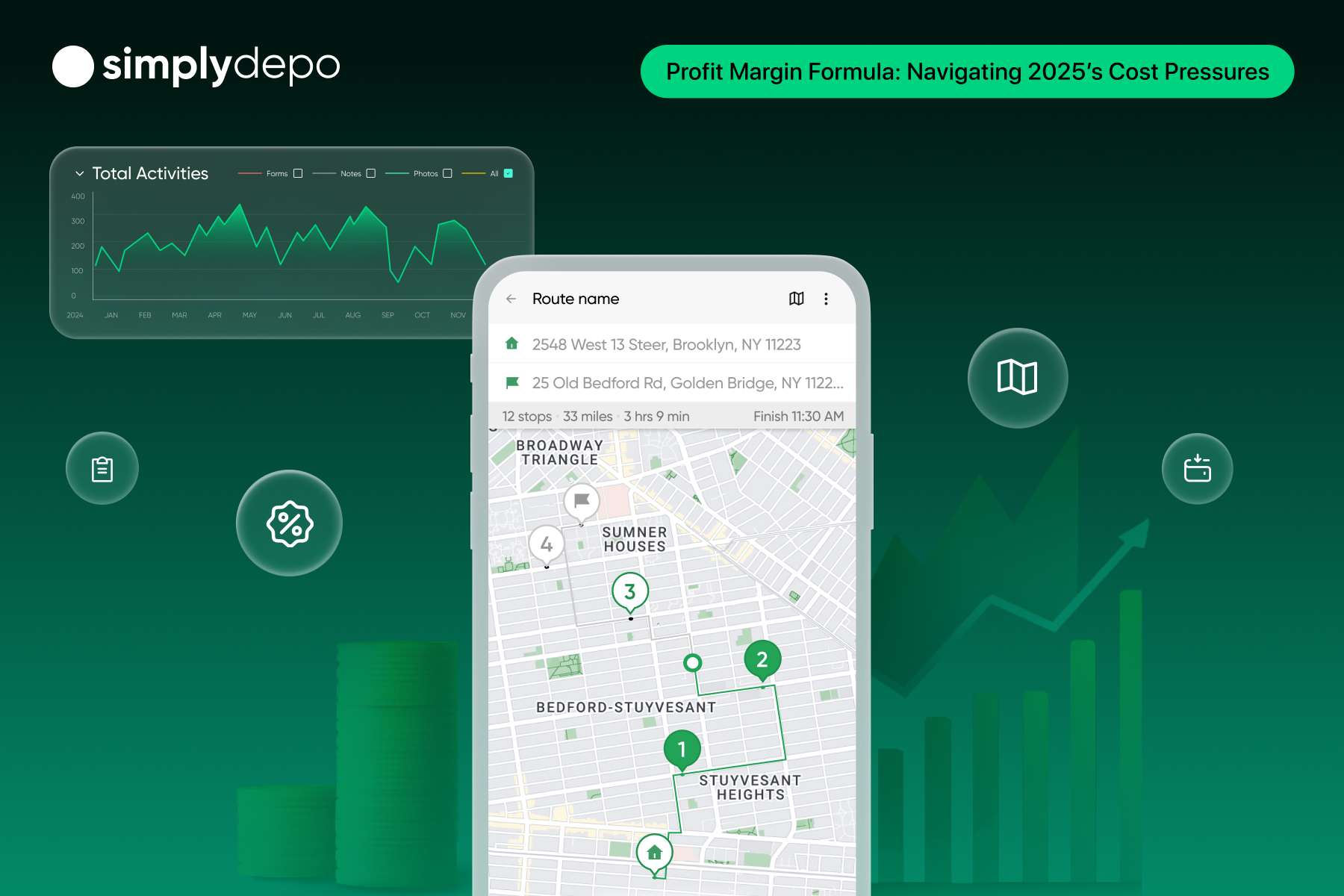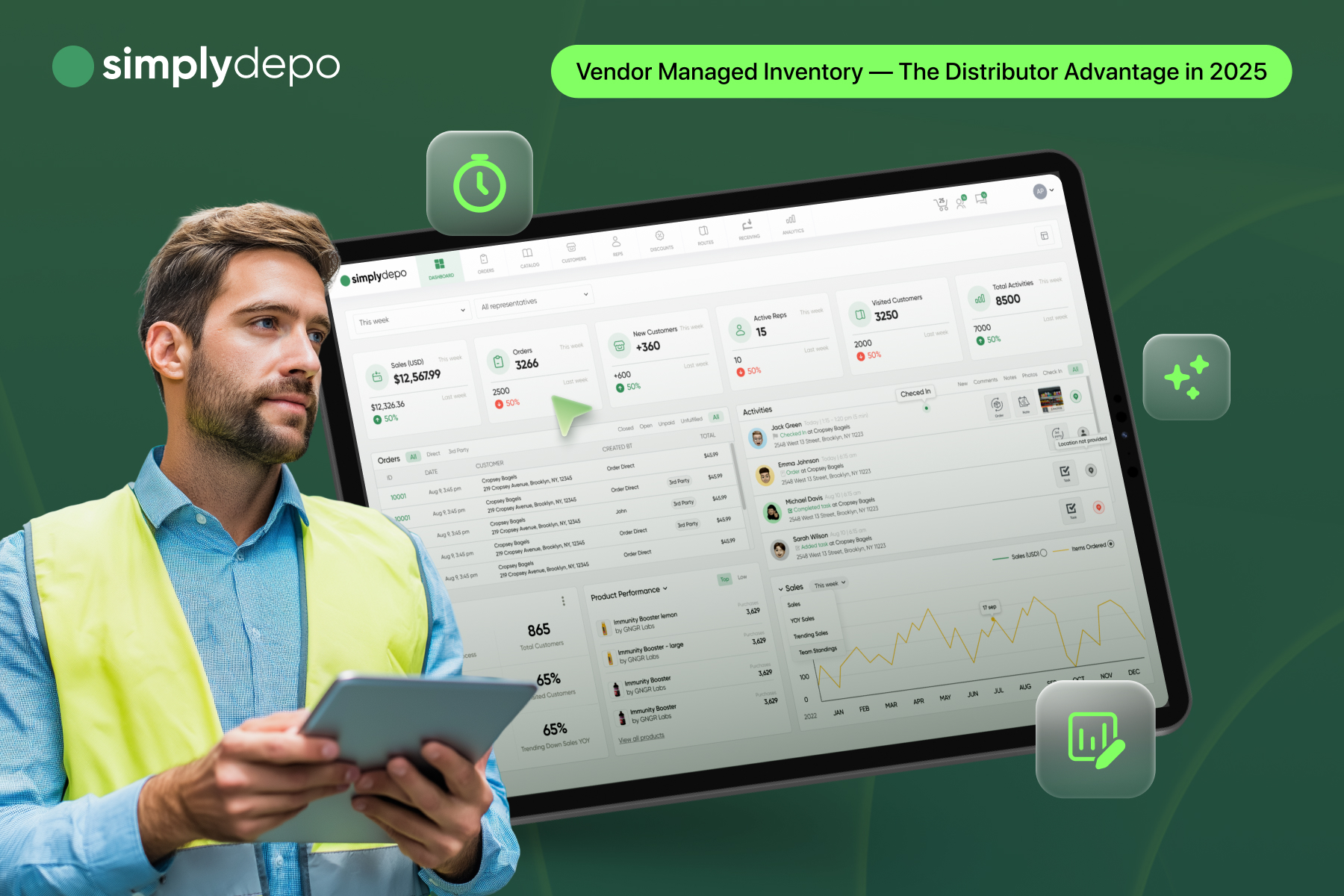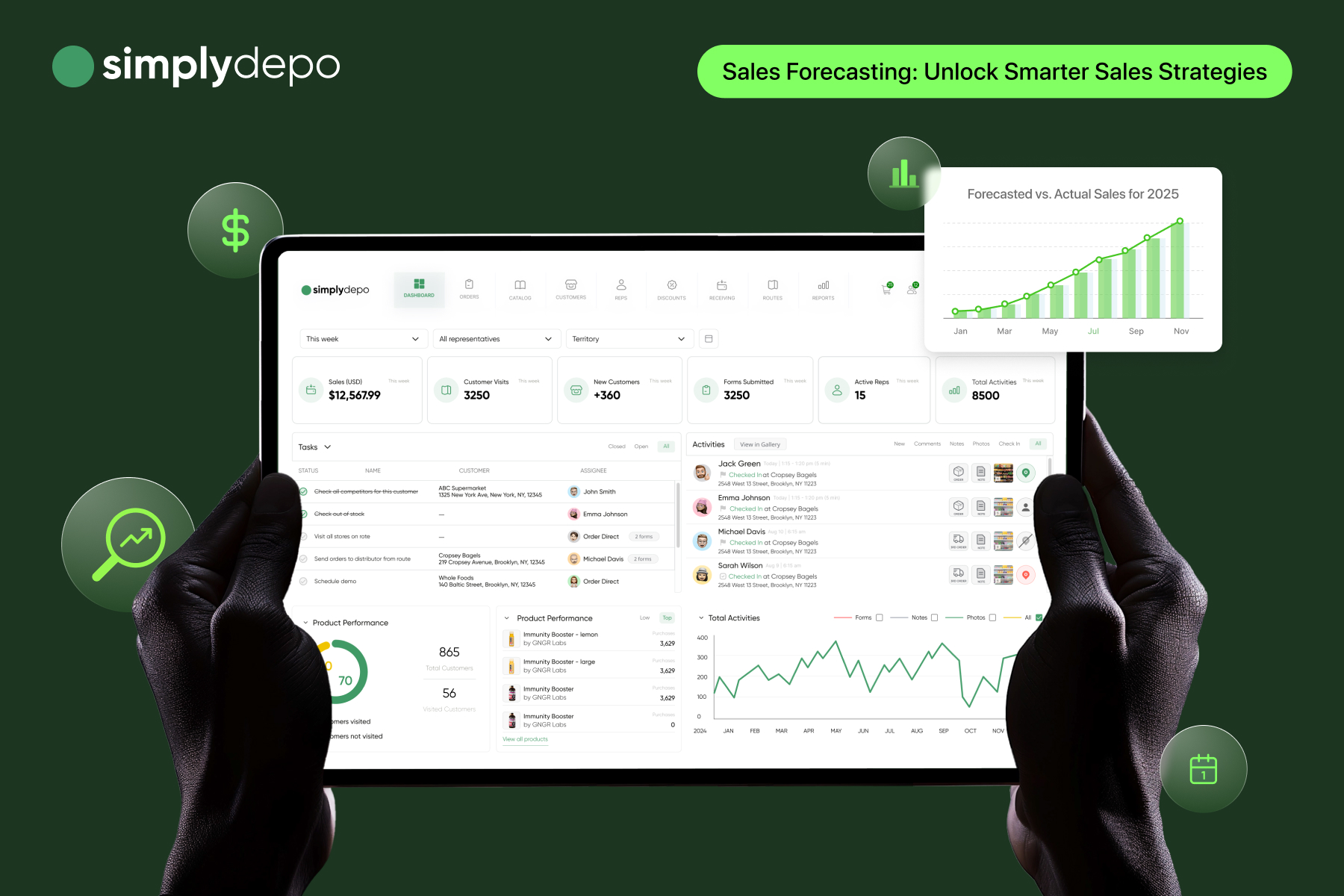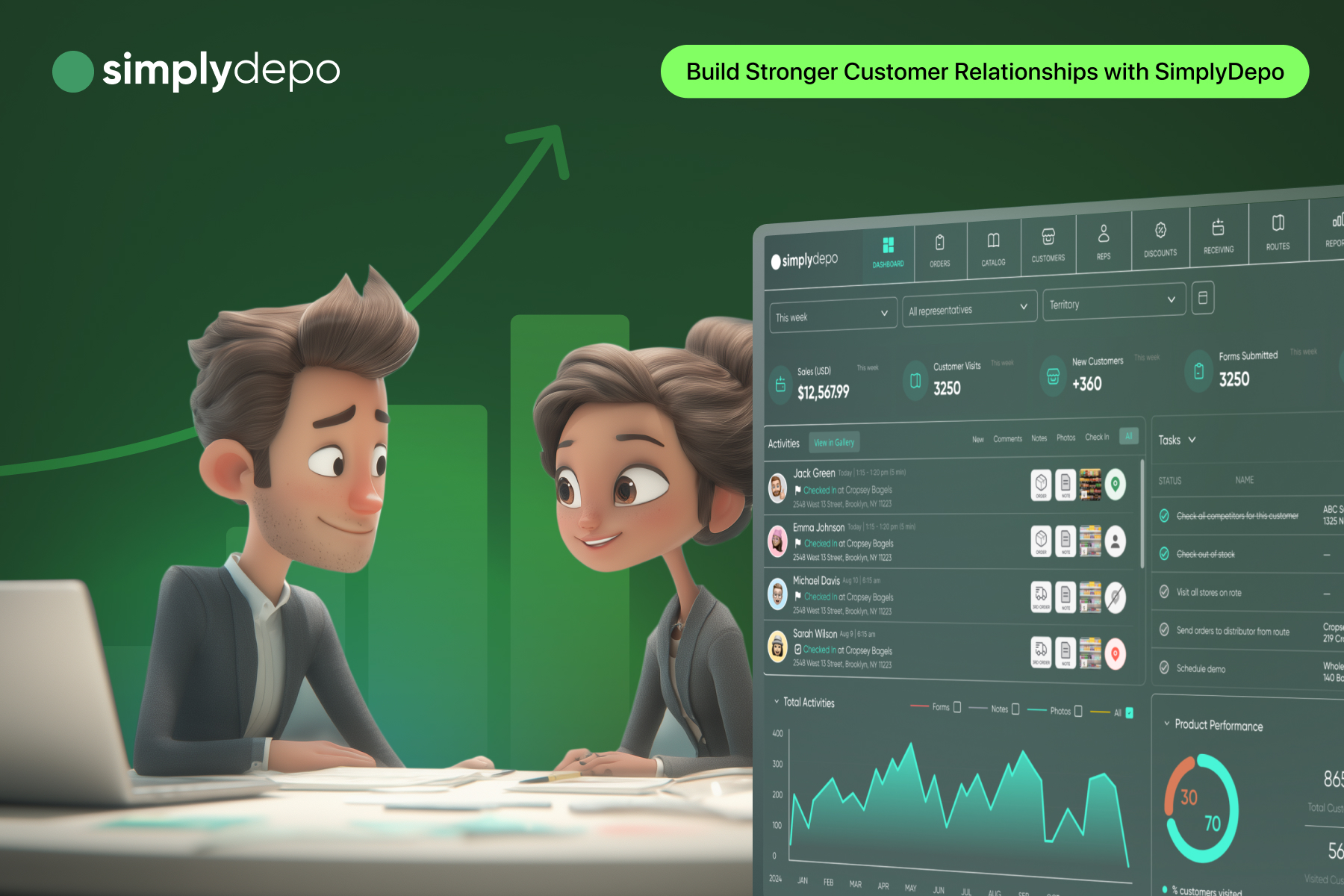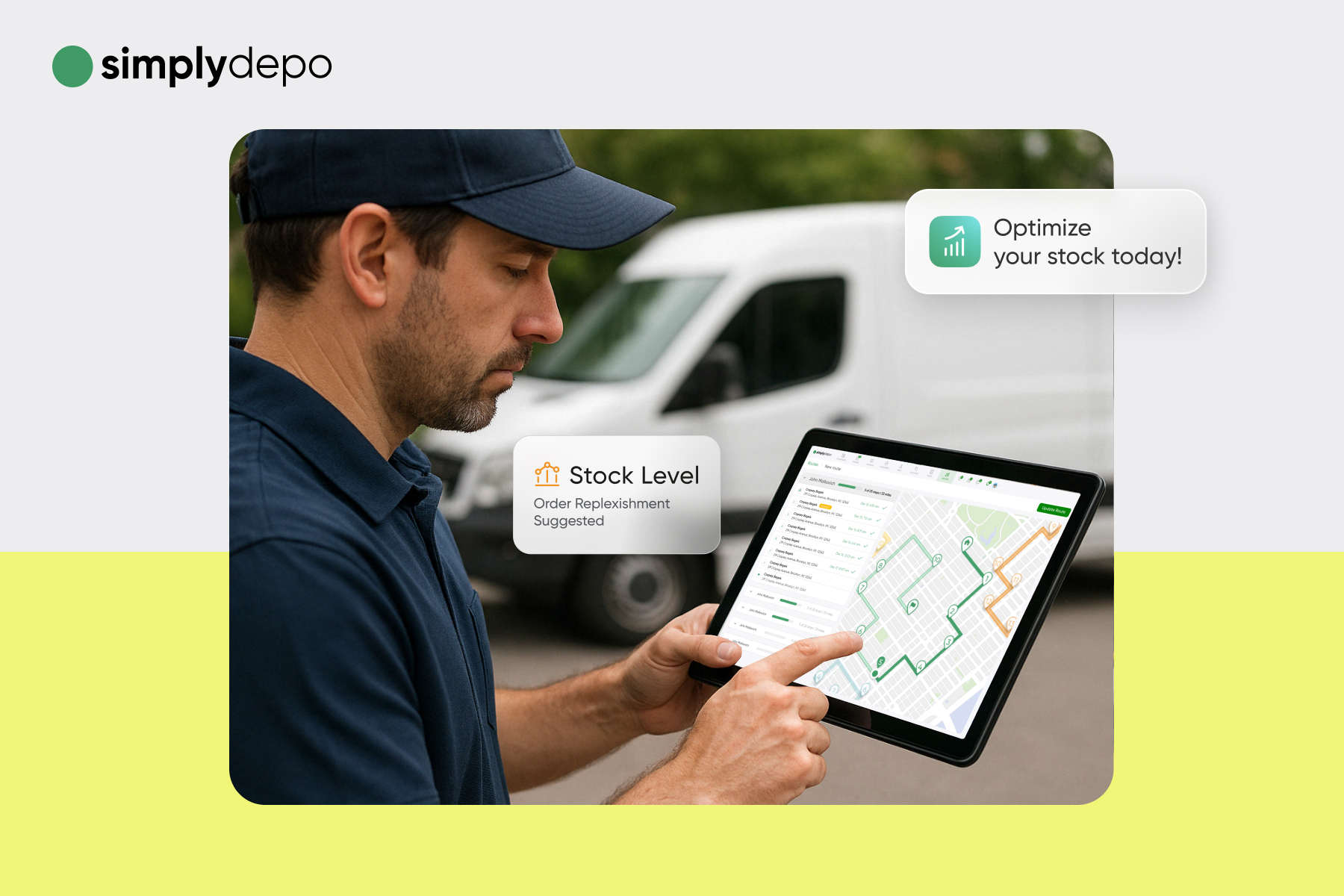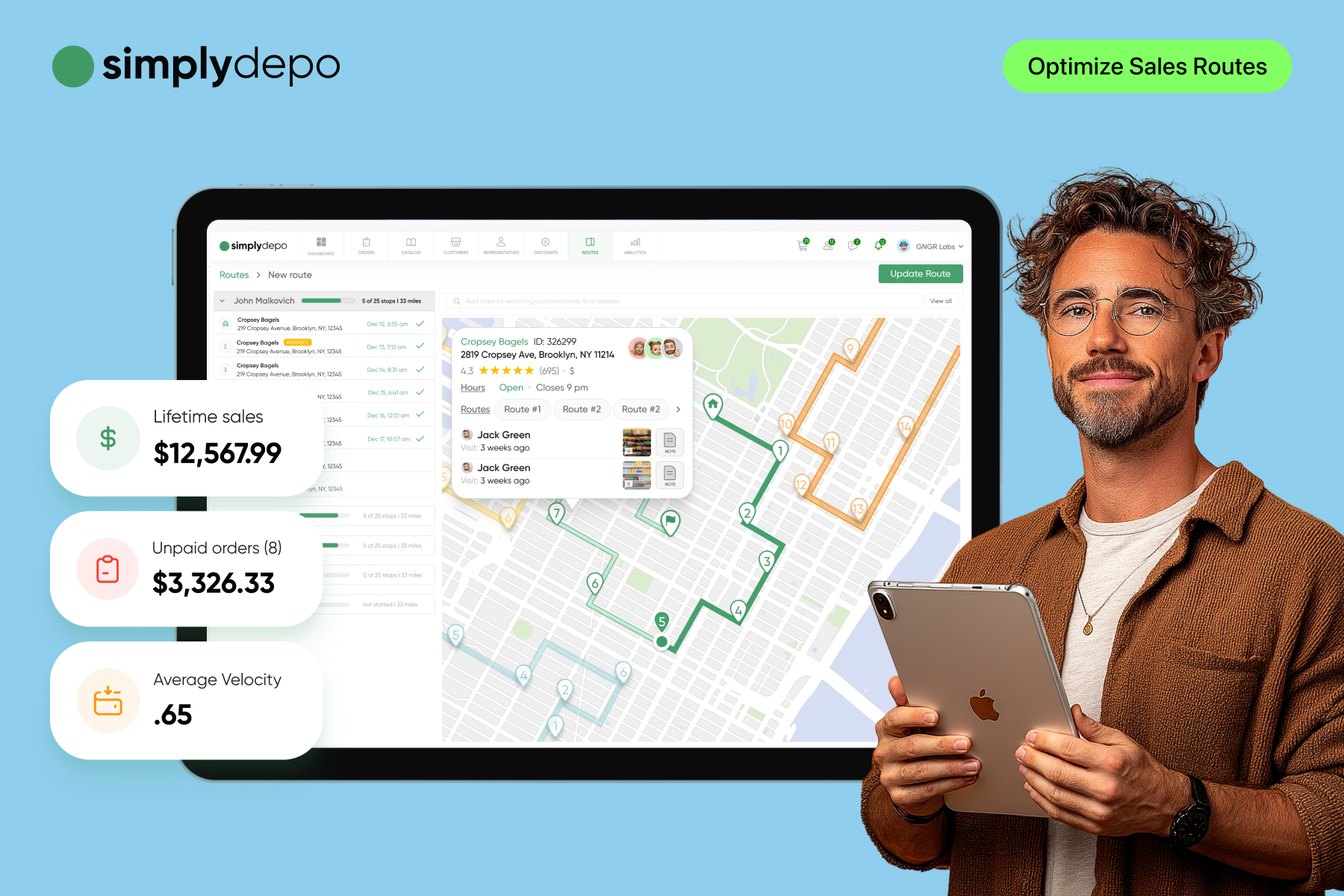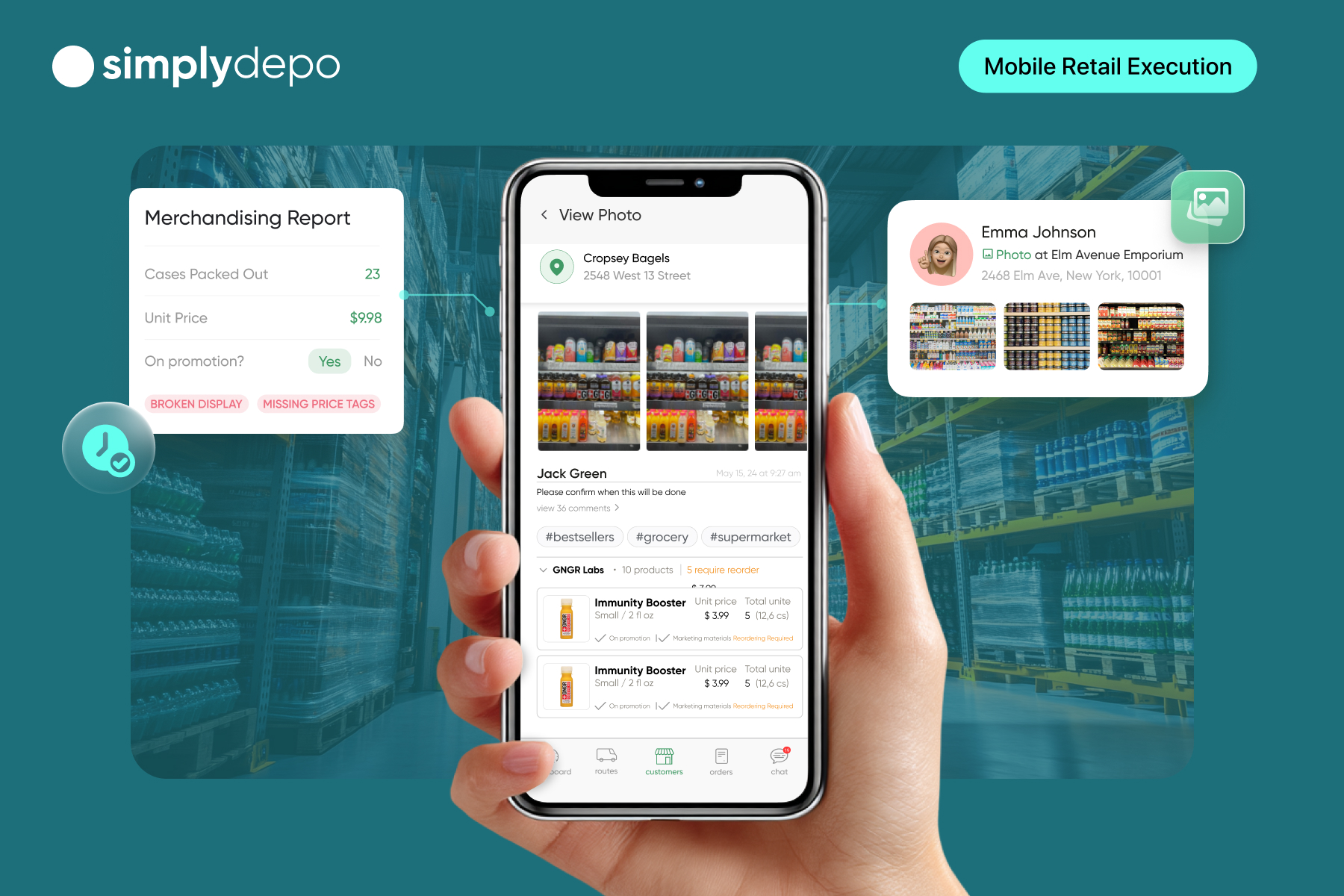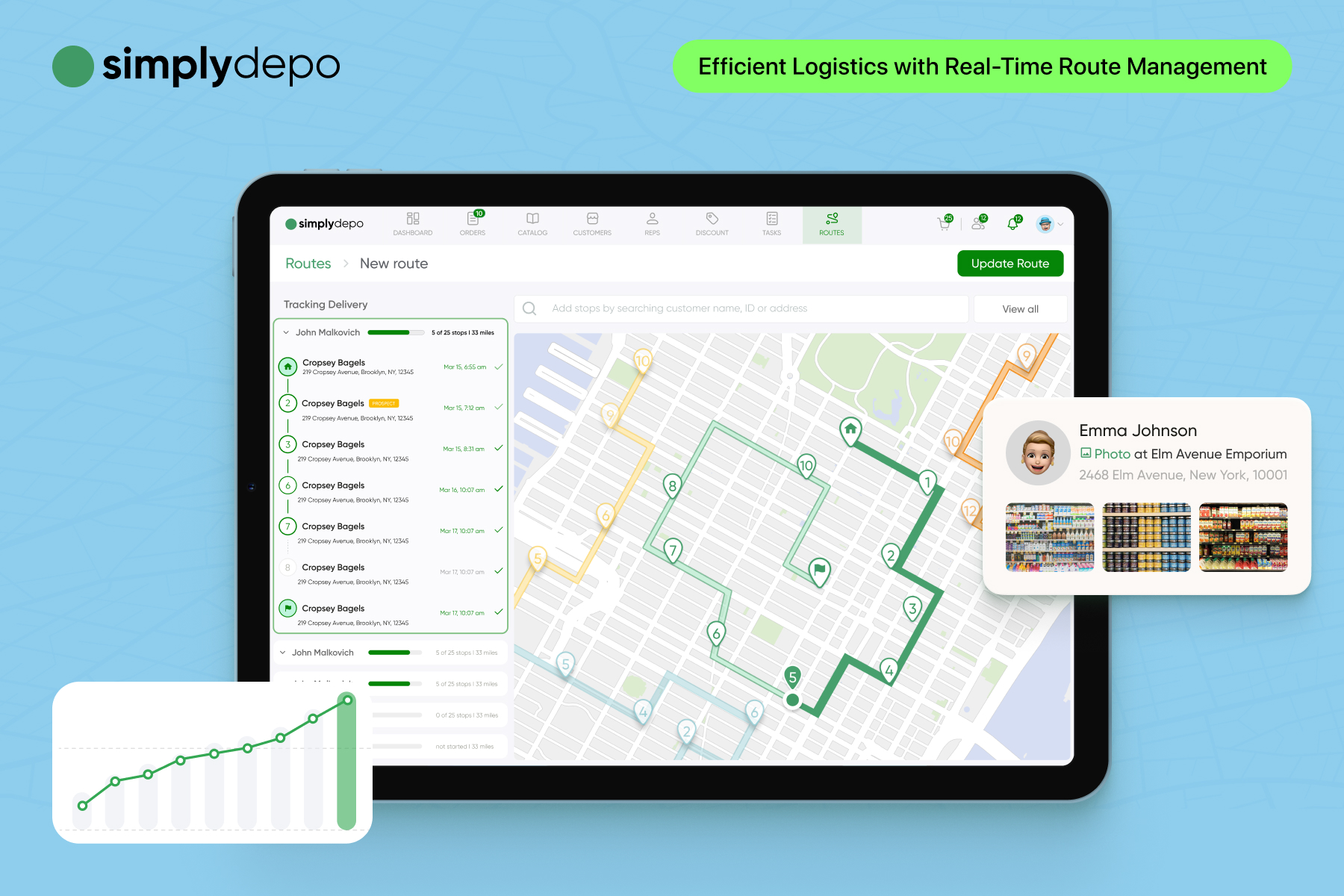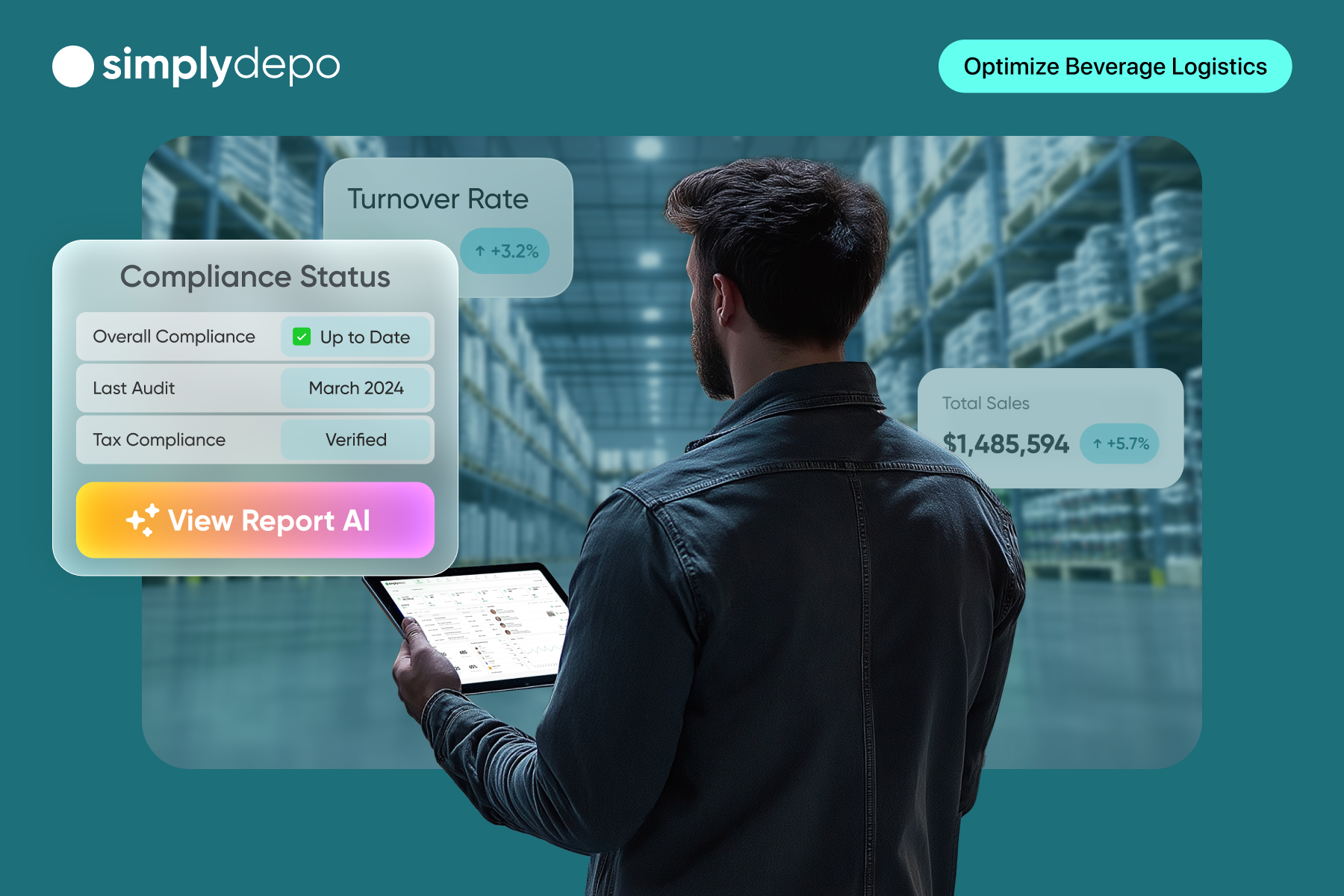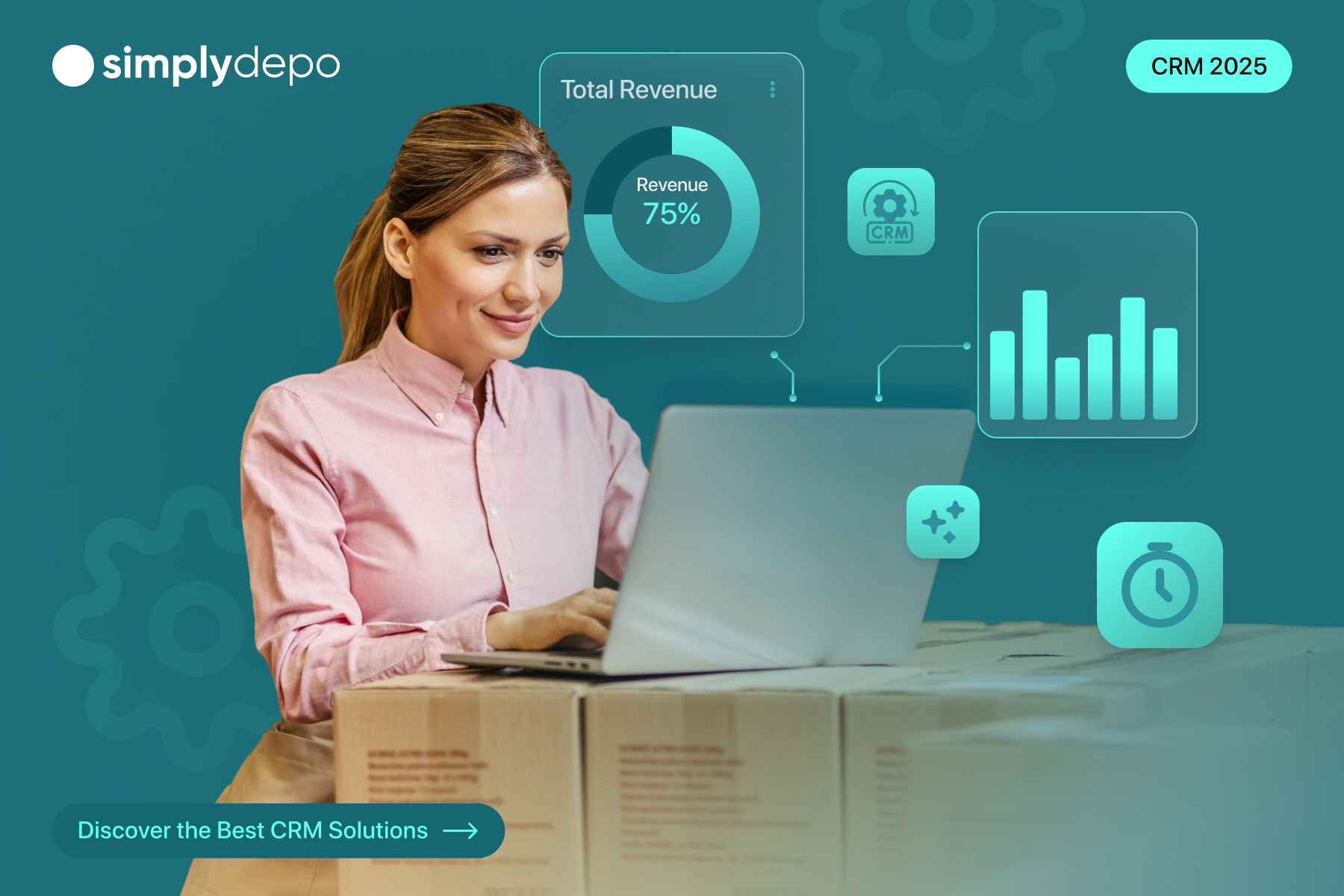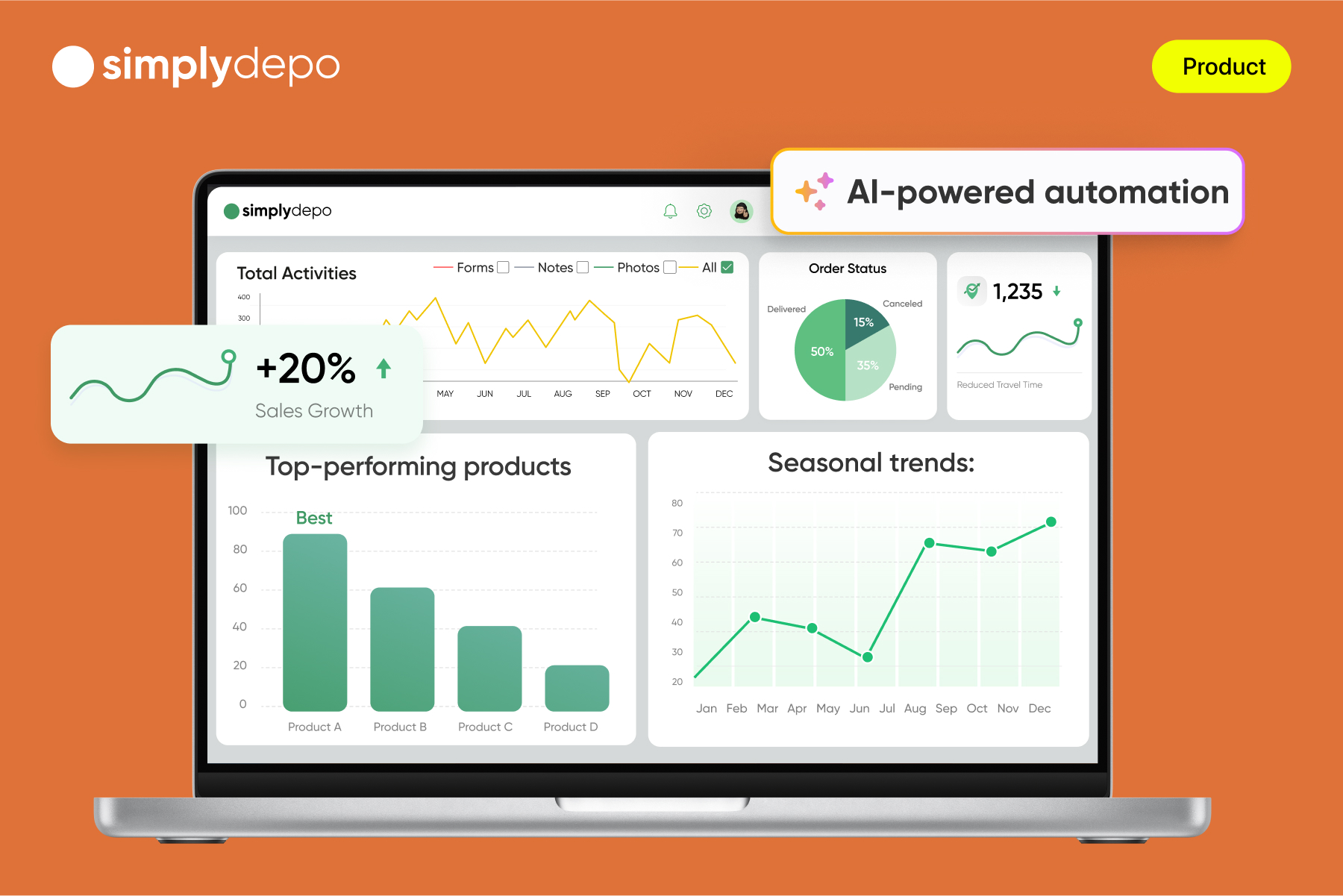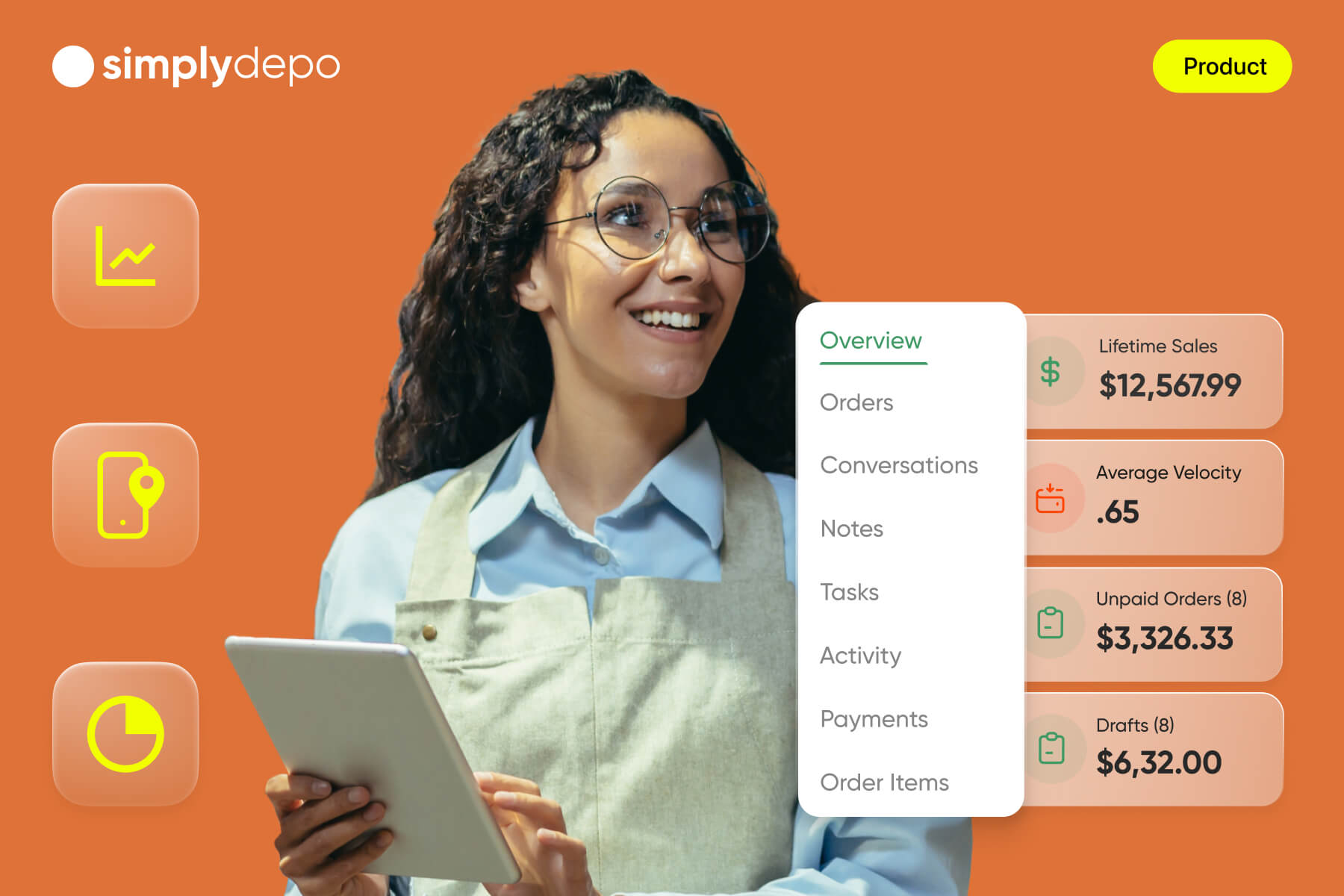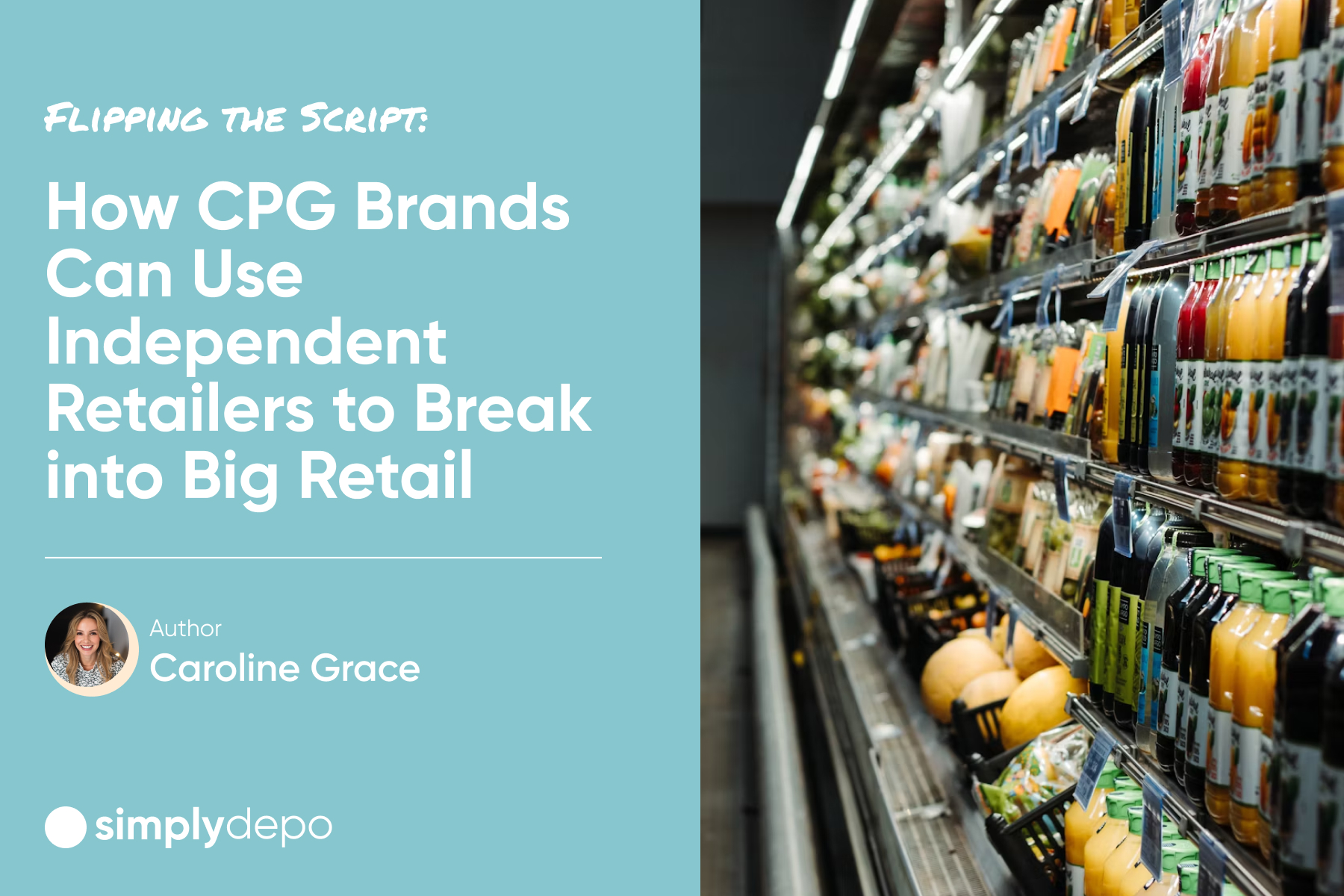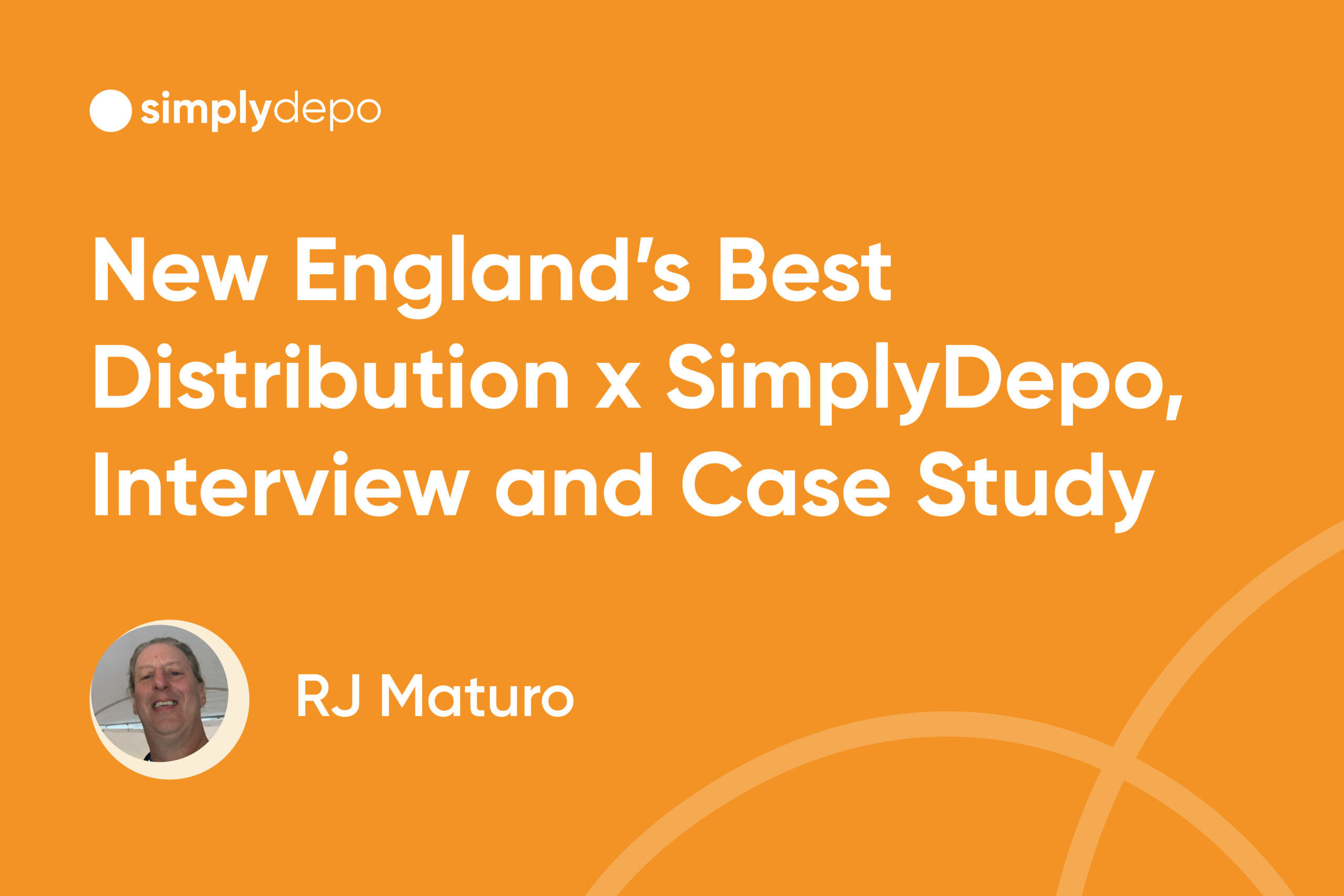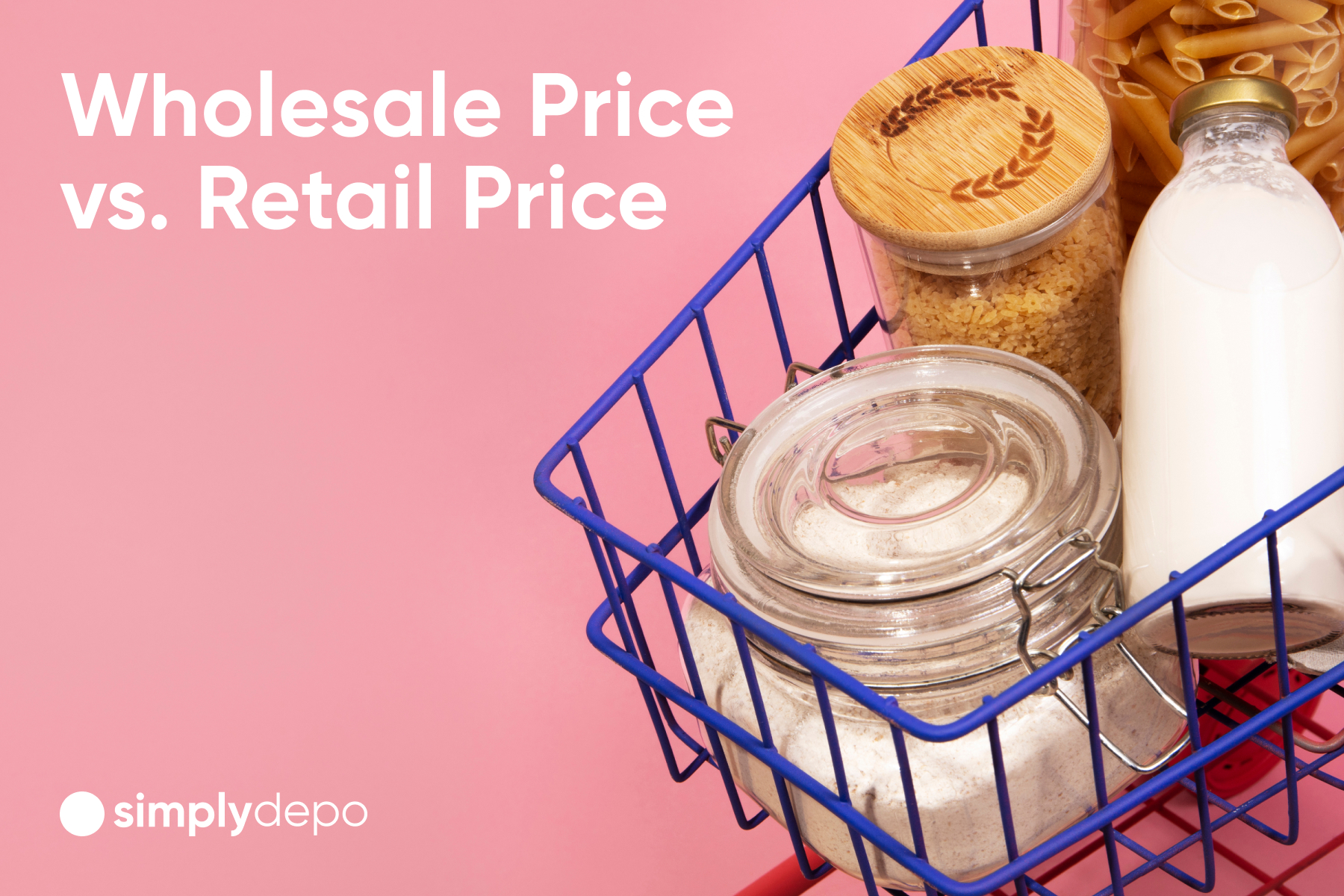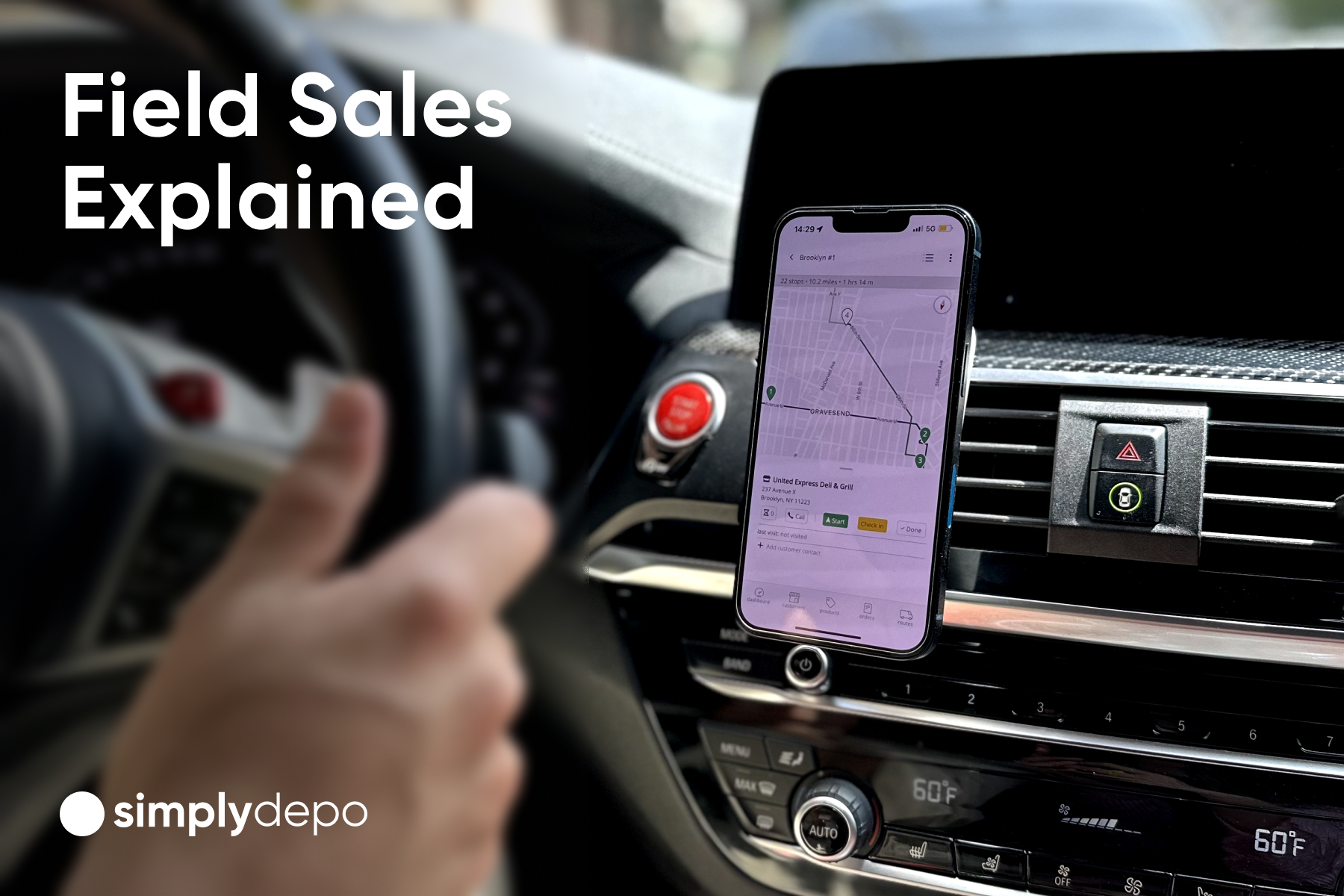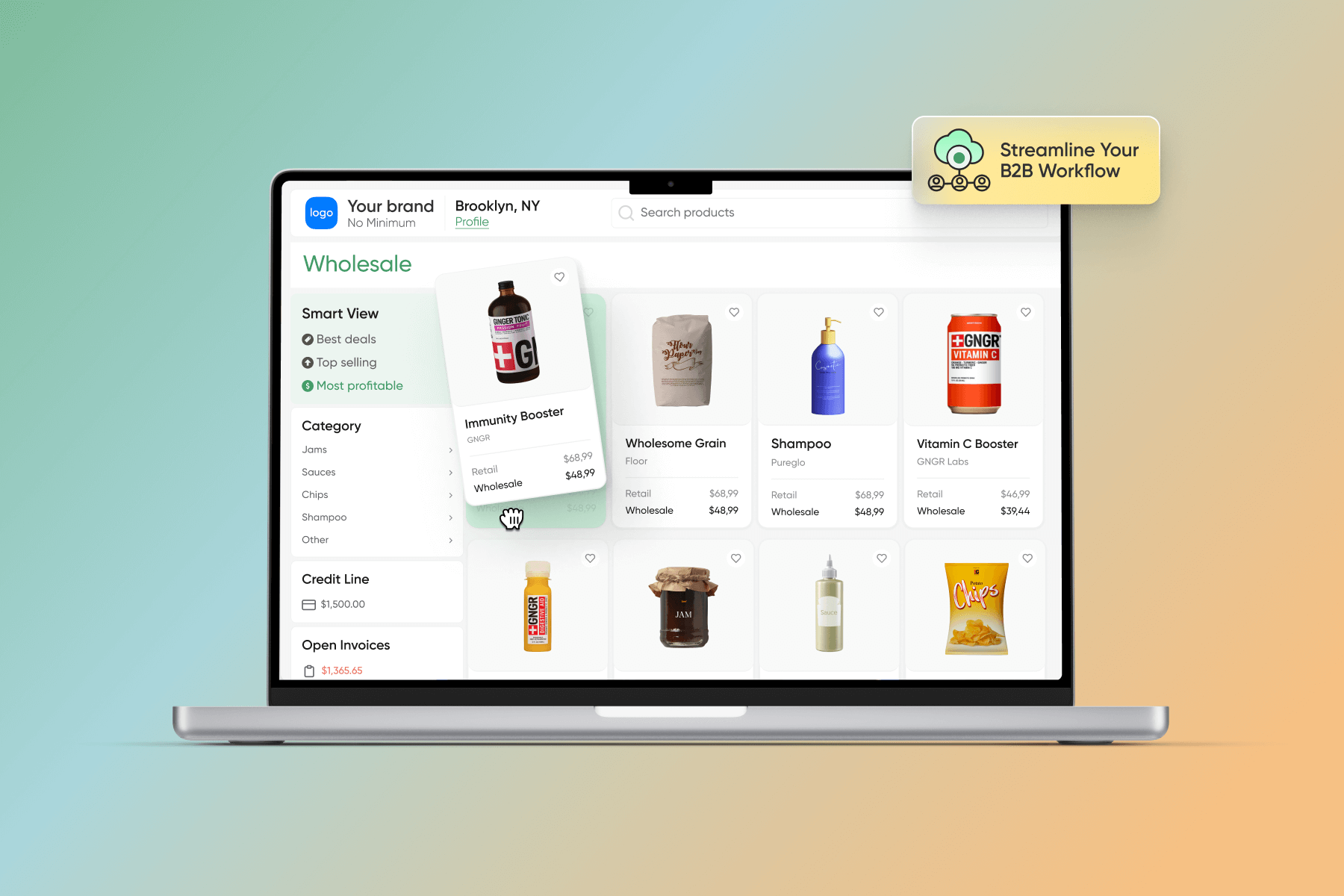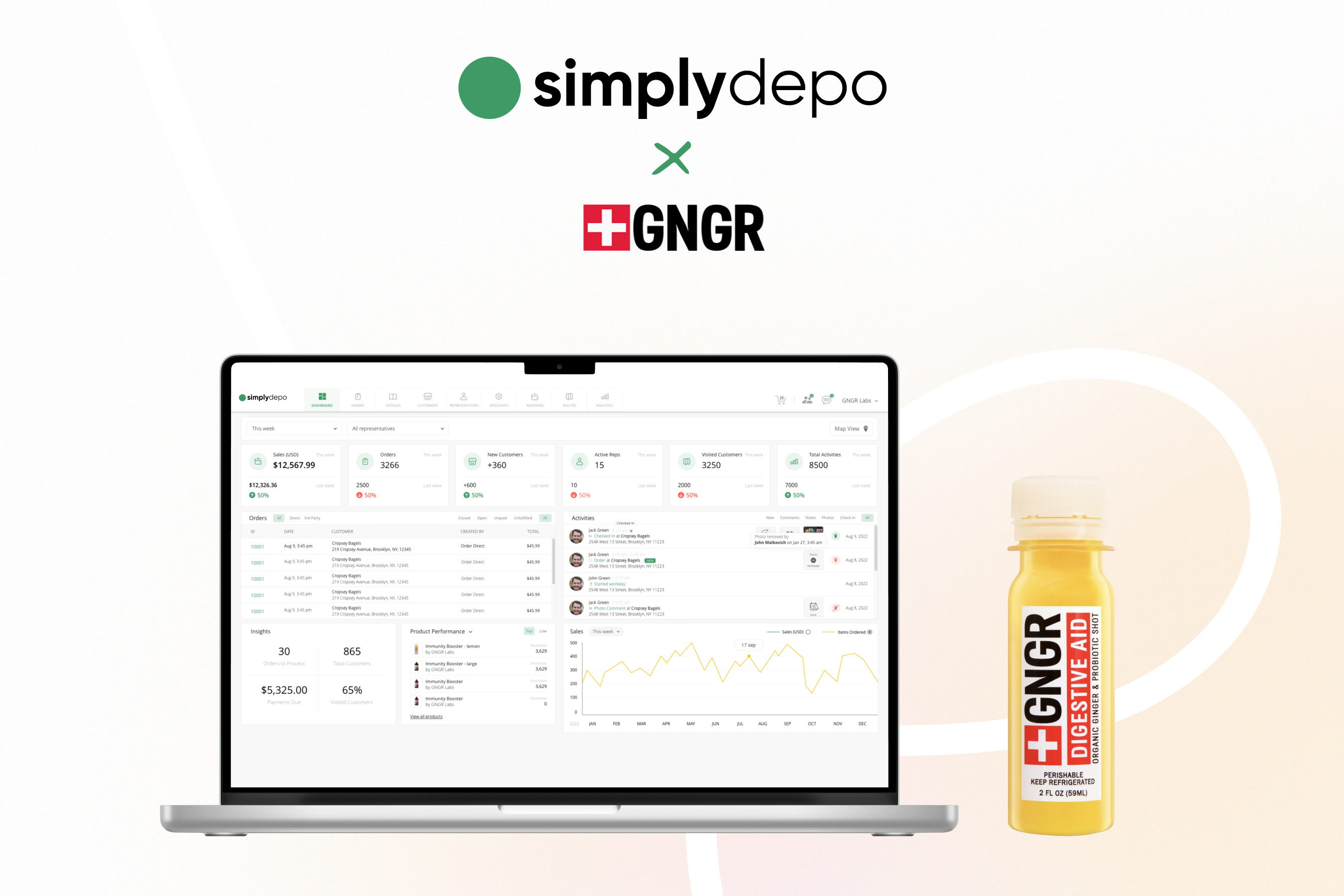How to Unlock the Power of AI for Smarter Inventory Optimization

Inventory can be your biggest asset—or your biggest liability. Too much, and you waste money on storage, spoilage, and markdowns. Too little, and you lose sales and damage customer trust.
That’s where inventory optimization comes in.
Today, Artificial Intelligence (AI) is redefining how businesses—especially distributors and mid-sized brands—balance supply and demand with precision. No more guesswork. No more Excel fatigue. AI-driven inventory optimization helps you stock smarter, reduce waste, and grow more profitably.
In this guide, we’ll break down how AI is changing inventory optimization, what to look for, and how SimplyDepo empowers distributors to move from reactive to predictive inventory strategies.
What Is Inventory Optimization?
Inventory optimization is the process of determining the right quantity of each product to keep in stock across multiple warehouses, routes, or locations, to meet customer demand at the lowest possible cost.
Traditional inventory planning involves:
- Manual reorder points
- Safety stock buffers
- Basic demand estimates based on past sales
But these methods are static, disconnected, and can’t respond to real-time shifts in demand, seasonality, or supply chain disruptions.
AI changes everything by allowing you to optimize inventory dynamically, in real time, and at scale.
The Cost of Bad Inventory Decisions
Before we get into solutions, let’s talk about the cost of bad inventory decisions:
Inventory Issue Business Impact Overstock Cash flow problems, higher holding costs, product obsolescence Stockouts Lost sales, lower customer satisfaction, urgent restocking fees Manual errors Inaccurate forecasts, wasted labor, delaysPoor visibilityBlind decisions across routes, warehouses, or sales channels
A 2024 Gartner study found that inventory mismanagement costs mid-market distributors 8–15% of annual revenue.
How AI Is Changing Inventory Optimization
AI brings automation, prediction, and intelligence into inventory processes that were previously manual and reactive.
1. SKU-Level Demand Forecasting
AI models can forecast demand per product, per customer, per region—far more granular than traditional forecasting. This means the right product is in the right place at the right time.
2. Real-Time Replenishment Recommendations Instead of fixed reorder points, AI systems generate dynamic replenishment signals based on sales velocity, trends, and upcoming demand drivers (e.g., promotions, weather, holidays).
3. Automated Safety Stock Adjustments
AI adjusts safety stock levels based on supply chain variability, vendor reliability, and sales patterns, so you’re protected without overstocking.
4. Intelligent Alerts and Exceptions
Rather than digging through spreadsheets, managers get proactive alerts when items are overstocked, understocked, or when ordering patterns change unexpectedly.
SimplyDepo in Action: Real-World Inventory Optimization for Distributors
SimplyDepo is a cross-platform solution built for wholesale distributors, field sales teams, and B2B brands. Its AI forecasting and inventory visibility tools help you make smarter decisions and less firefighting.
📍 Case: HC Foods
HC Foods, with over 1000 SKUs across two warehouses, used to rely on spreadsheets and intuition. They adopted SimplyDepo’s AI-based inventory module in early 2024.
Results:
- Inventory holding costs dropped by 21% in 6 months
- Fill rates increased from 89% to 96%
- Dead stock reduced by over 12%
The AI engine identified underperforming SKUs, predicted seasonal demand, and created clear replenishment recommendations—all in one dashboard.
5 Benefits of AI-Driven Inventory Optimization
1. Lower Costs Across the Supply Chain
By matching stock levels to actual demand, you avoid excess storage, reduce obsolete stock, and cut emergency shipping fees.
2. Higher Service Levels
When products are always available, customers get what they want, when they want it, strengthening loyalty and repeat sales.
3. Data-Driven Decision-Making
AI eliminates gut-feel planning and enables better cross-team coordination between sales, warehouse, and purchasing teams.
4. Time Savings
No more late-night spreadsheet cleanups. Replenishment suggestions, order triggers, and alerts are automated.
5. Better Use of Working Capital
Optimized inventory frees up cash to reinvest in growth, marketing, or new product lines.
How AI Inventory Optimization Helps Small Distributors and CPG Brands Cut Costs
Small brands and distributors can achieve big cost savings with AI inventory optimization by streamlining processes, reducing waste, and making data-driven decisions. Here’s how small brands and distributors can manage and save with AI inventory optimization:
1. Reducing Overstocking and Understocking
AI Advantage:
AI-driven inventory optimization tools predict demand more accurately by analyzing historical data, seasonal trends, and external factors like weather or promotions.
Cost Savings:
By maintaining the right stock levels, small brands and distributors avoid overstocking, which can lead to higher storage costs, markdowns, and product obsolescence. They also avoid stockouts, which can result in lost sales and customer dissatisfaction.
2. Optimizing Safety Stock Levels
AI Advantage:
AI adjusts safety stock levels based on data like lead time, demand fluctuations, and vendor reliability.
Cost Savings:
Small brands and distributors can prevent the extra costs of holding excessive safety stock while still being protected against demand variability and supply chain disruptions. This reduces unnecessary inventory holding costs.
3. Automated Replenishment
AI Advantage:
AI systems generate dynamic replenishment recommendations based on real-time sales data, trends, and upcoming demand drivers (e.g., promotions or holidays).
Cost Savings:
Automation reduces manual intervention in inventory management, saving time and labor costs. It also helps small brands and distributors place timely orders, reducing the need for last-minute or emergency restocking that often comes with higher shipping costs.
4. Reducing Waste and Spoilage
AI Advantage:
AI can predict demand fluctuations, especially for perishable goods or time-sensitive products, helping businesses avoid excess inventory.
Cost Savings:
By forecasting demand for perishable items, small brands and distributors reduce the chance of spoilage or waste, especially in industries like food, cosmetics, or fashion, where products can become obsolete over time.
5. Improved Supply Chain Efficiency
AI Advantage:
AI optimizes the entire supply chain by improving demand forecasting, adjusting production schedules, and aligning inventory with actual customer needs.
Cost Savings:
With better inventory management, small brands and distributors can negotiate better terms with suppliers, reduce excess storage costs, and cut down on inefficiencies like unnecessary transportation or emergency shipments.
6. Avoiding Manual Errors
AI Advantage:
AI systems automate calculations, inventory tracking, and demand forecasting, reducing human error.
Cost Savings:
Reducing errors in inventory levels, forecasting, and ordering prevents costly mistakes like ordering the wrong stock, missing sales opportunities, or misallocating resources.
7. Dynamic Pricing and Promotions
AI Advantage:
AI can analyze customer behavior, demand patterns, and market trends to recommend dynamic pricing strategies or promotional offers.
Cost Savings:
Small brands and distributors can optimize pricing strategies to maximize revenue, minimize markdowns, and ensure they’re pricing products at the right level to attract customers while protecting their margins.
8. Efficient Resource Allocation
AI Advantage:
AI tools can identify which products are most profitable and which ones have lower turnover rates, helping businesses allocate resources better.
Cost Savings:
Small brands and distributors can focus their marketing, warehousing, and sales efforts on higher-performing products while reducing the costs associated with slow-moving inventory.
9. Lower Operational Costs
AI Advantage:
With AI managing inventory levels, reordering, and forecasting, small brands and distributors reduce the need for extensive human labor in inventory-related tasks.
Cost Savings:
Labor costs are reduced as AI automates many processes, allowing employees to focus on more critical tasks that drive business growth.
10. Scalable Growth without Additional Costs
AI Advantage:
As small brands and distributors grow, AI allows them to scale inventory management processes without significantly increasing labor, storage, or operational costs.
Cost Savings:
With AI’s scalability, small brands and distributors can handle larger inventories and more complex supply chains efficiently, allowing them to grow without a proportional increase in overhead costs.
What to Look for in AI Inventory Optimization Tools
Whether you’re looking for a standalone tool or an integrated platform like SimplyDepo, here’s what to prioritize: Feature Description Automated Forecasting Predict by SKU, client, region Real-Time Visibility Across all warehouses, stores or routes Custom Replenishment Rules Based on lead time, velocity, or seasonality Mobile and Web Access For field reps and warehouse teams to collaborate Exception Alerts Get notified before a problem becomes a crisis
SimplyDepo combines all of the above in one interface for SMBs and growing distributors—no data team required.
How It Works: AI Inventory Optimization in 5 Steps
Here’s how SimplyDepo users optimize their inventory with AI:
Step 1: Connect Sales and Inventory Data
Sync historical sales, stock levels, supplier lead times, and route info.
Step 2: Forecast SKU-Level Demand
AI models predict future demand based on patterns, seasonality, and trends.
Step 3: Get Replenishment Recommendations
The system suggests what to order, when, and how much, based on live conditions.
Step 4: Take Action
Warehouse or purchasing managers approve and send POs or allocate stock across locations.
Step 5: Monitor and Adjust
Track fill rate, aging stock, turnover, and inventory health, and adjust as needed.
Common Challenges (and How AI Solves Them)
Challenge: Stockouts during promotions
AI Fix: Includes promo data in forecasts and adjusts buffer stock levels.
Challenge: Overstock of slow-moving SKUs
AI Fix: Identifies low-velocity SKUs early and recommends reduction or substitution.
Challenge: Delayed purchasing due to manual approvals
AI Fix: Alert-based workflows help teams act before issues escalate.
SimplyDepo: Built for the Real World of Wholesale Distribution
Unlike general-purpose ERPs, SimplyDepo is designed for growing distributors. It combines:
- Inventory visibility
- AI forecasting
- Order management
- Route and field team coordination
This integrated approach means inventory decisions are made with full context, not in silos.
And because SimplyDepo is mobile-first, sales reps can check inventory and submit orders in the field, so the most up-to-date stock movements are always reflected in your forecasts.
“We used to over-order out of fear. Now we know what to expect, what to stock, and where to cut waste.” — Logistics Manager, HC Foods
By aligning inventory with demand in real time, you can:
- Reduce stock excess
- Avoid costly stockouts
- Improve customer satisfaction
- Free up cash flow
- Scale with confidence
📦 Ready to level up your inventory operations? Contact the SimplyDepo team today
FAQs: AI and Automated Forecasting
What is automated forecasting?
Automated forecasting is the process of predicting future demand based on historical data and trends.
How does AI help with automated forecasting?
AI uses algorithms to predict demand, automate replenishment, and adjust stock levels based on real-time data and trends.
Can small businesses use AI forecasting tools?
Yes. Tools like SimplyDepo are designed for small and mid-sized distributors with no need for data analysts or developers.
What’s the ROI of AI automated forecasting?
Distributors using AI tools see 10-25% reduction in carrying costs and improved service levels within the first few months.
Is it hard to implement AI forecasting systems?
With user-friendly platforms like SimplyDepo, implementation is easy, and support is provided for data onboarding, team training, and ongoing optimisation.
How do AI inventory optimization tools adapt to changing market conditions or disruptions?
AI inventory optimization tools can adapt to changing market conditions by looking at real time data and external factors like economic changes, promotions or supply chain disruptions. AI systems update their forecasts based on new information and adjust stock levels and replenishment orders. For example if a market disruption occurs like a sudden surge in demand or a supplier delay the AI system can recalibrate stock levels and notify managers to take action, minimizing the impact of the disruption.
How does AI inventory optimization help with supply chain resilience during peak seasons?
AI inventory optimization helps with supply chain resilience during peak seasons by forecasting demand accurately and adjusting stock levels in real time. AI can look at historical data from previous peak seasons and current trends to predict demand spikes. This allows businesses to increase safety stock for high demand items without overstocking. AI can also optimize replenishment schedules and automate ordering so products are available when needed, minimize stockouts and overall supply chain efficiency during busy periods.






